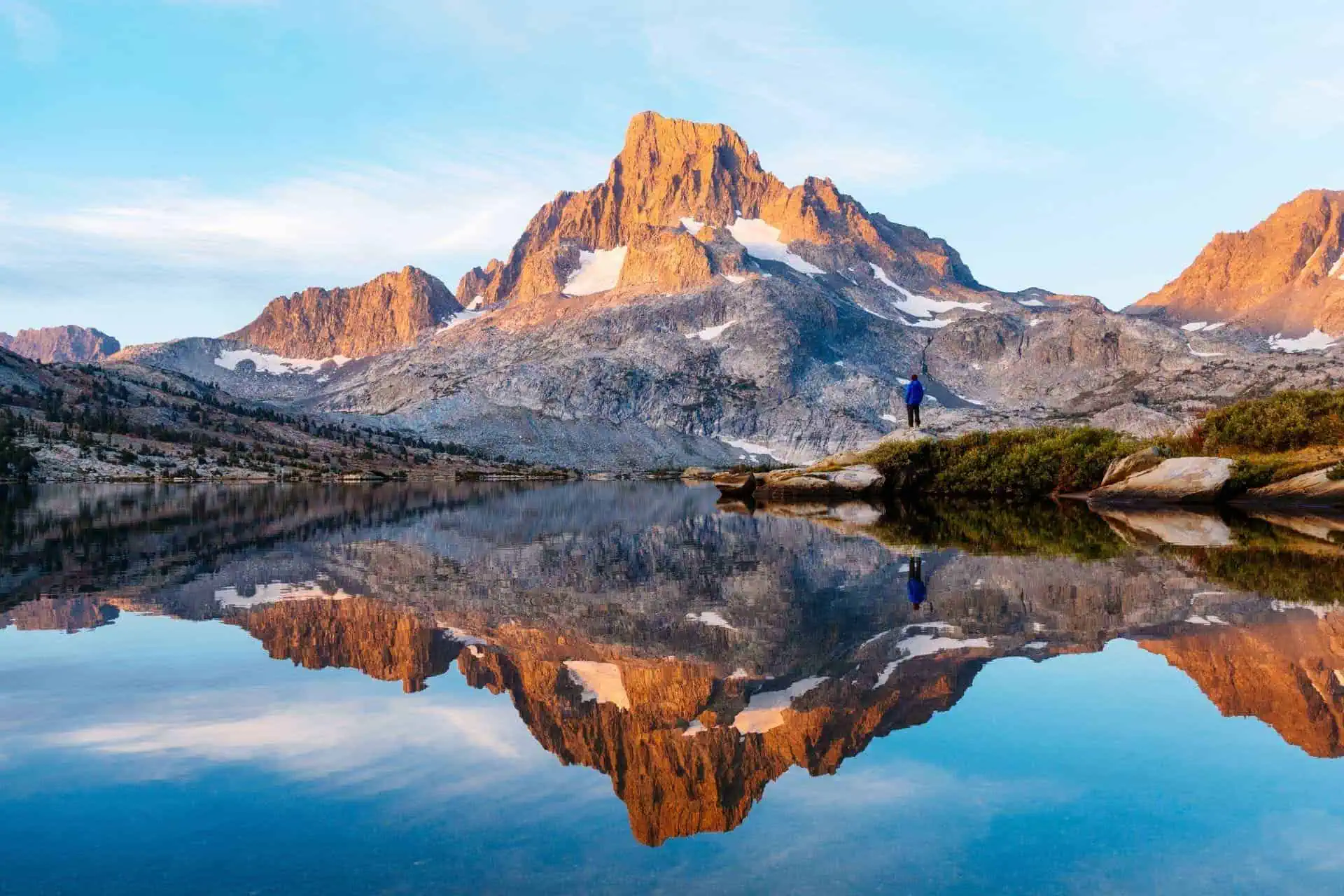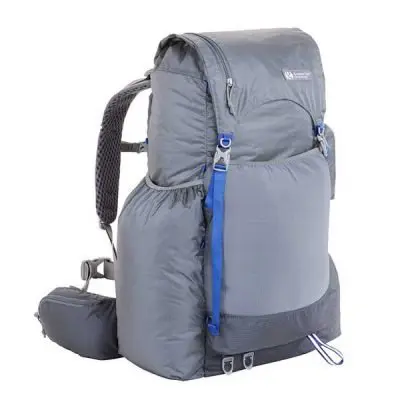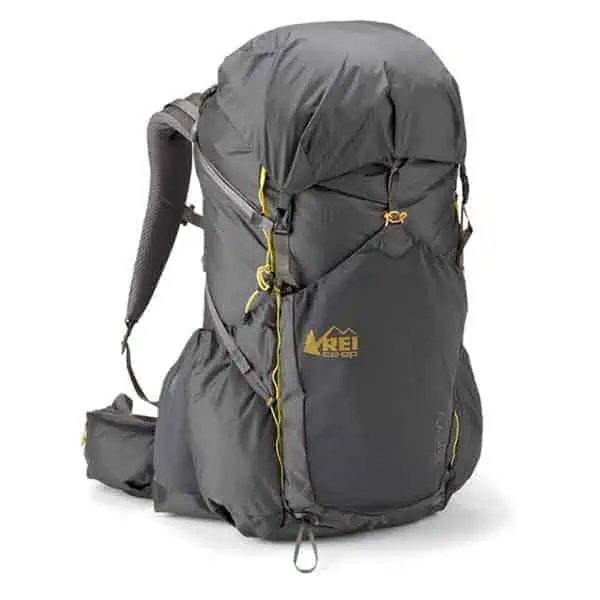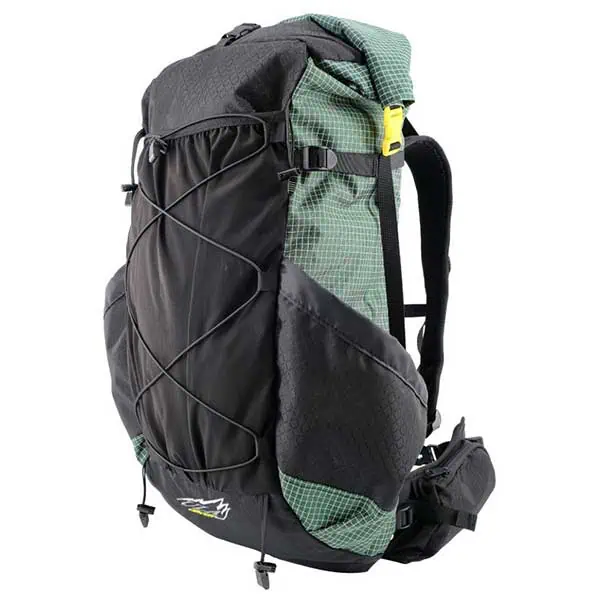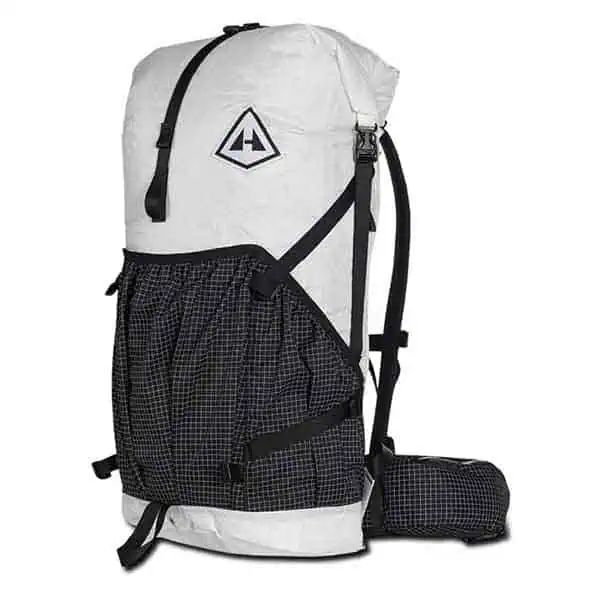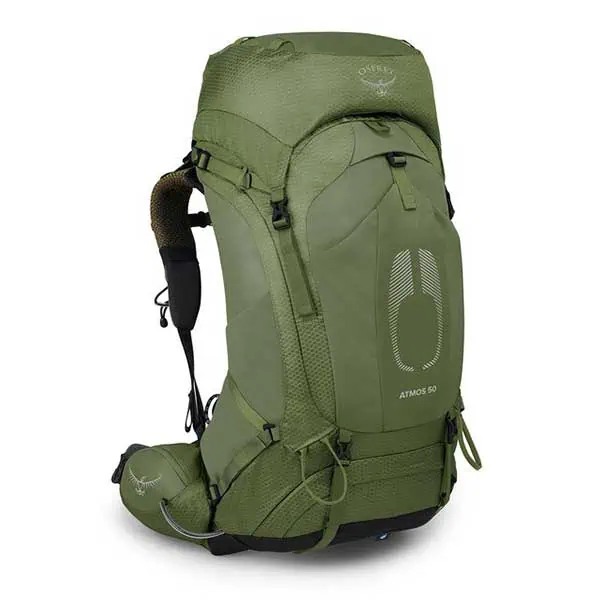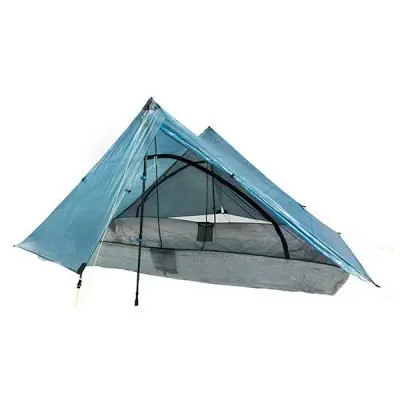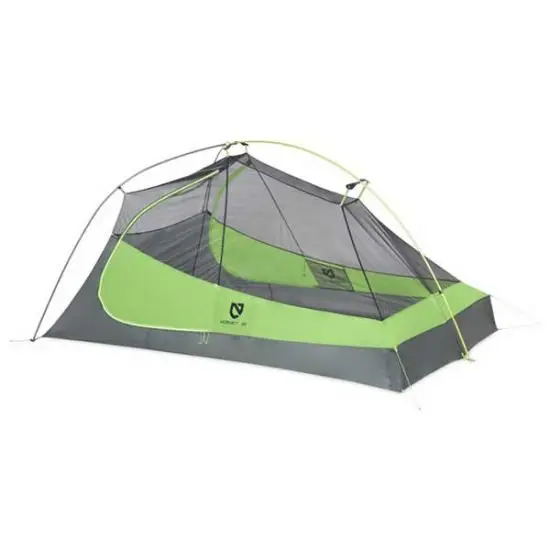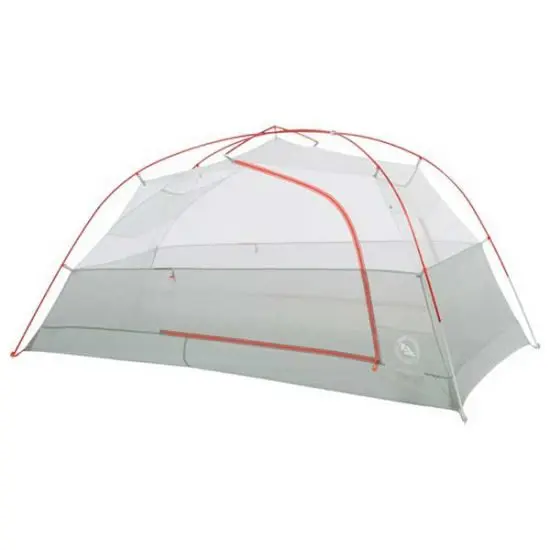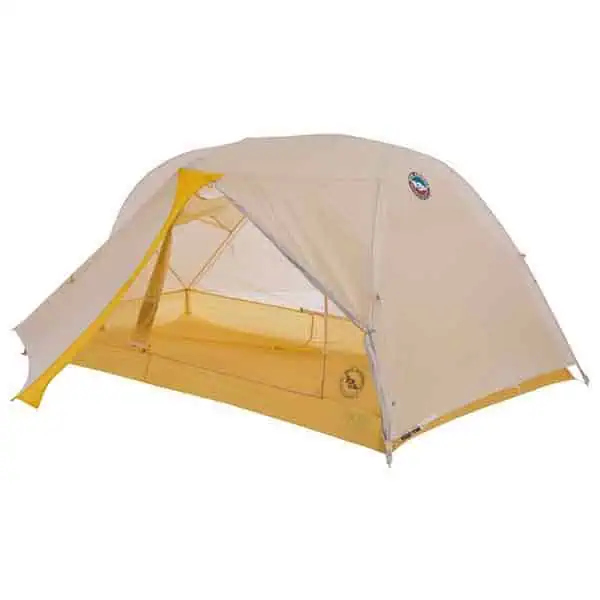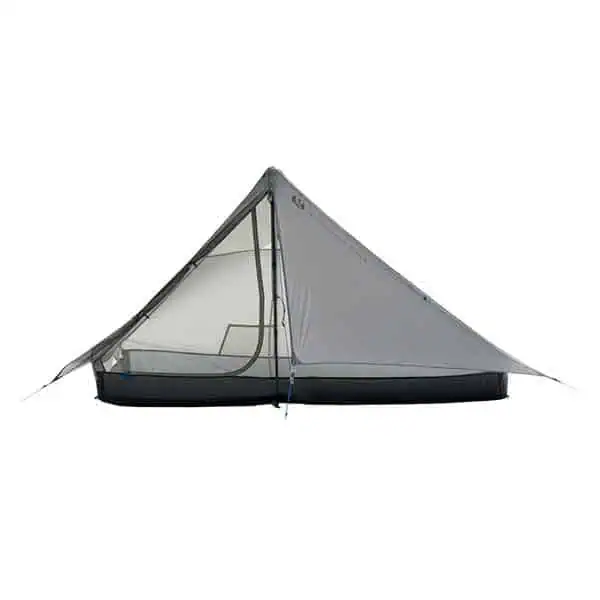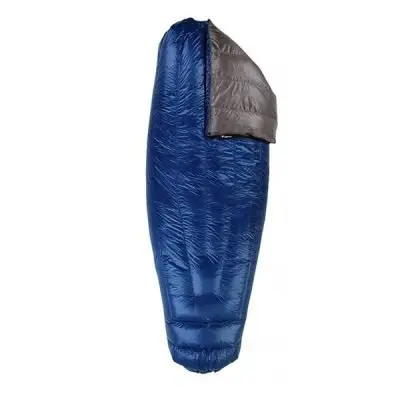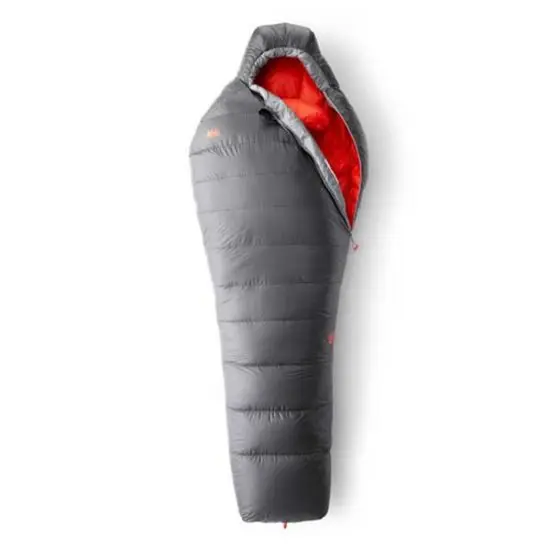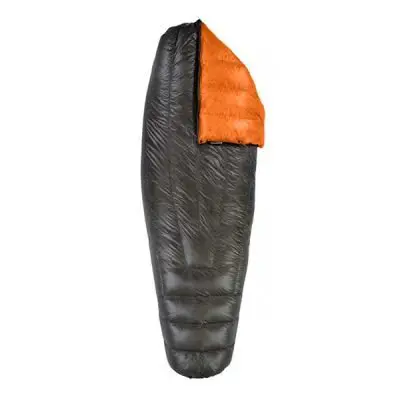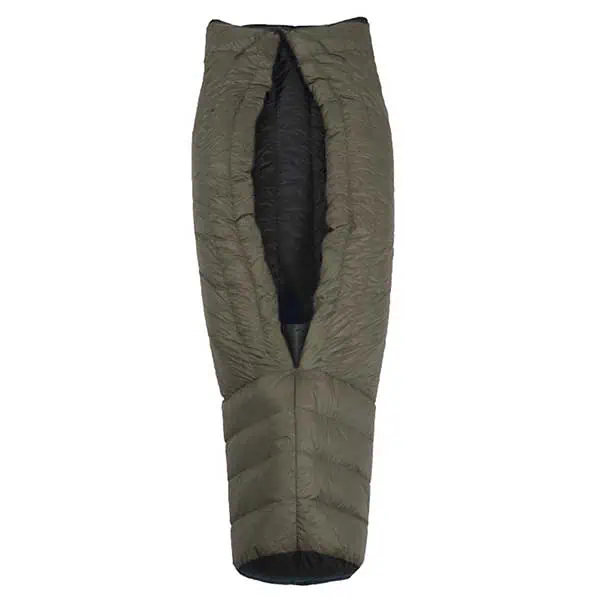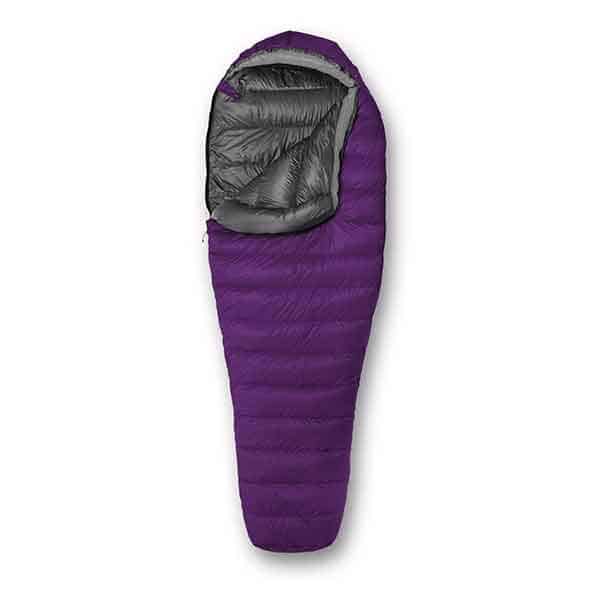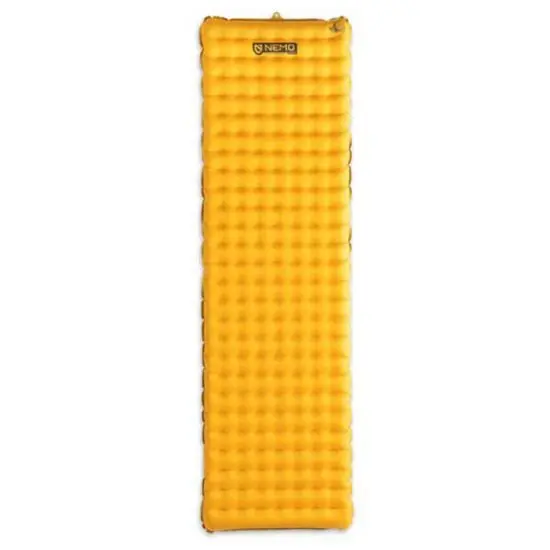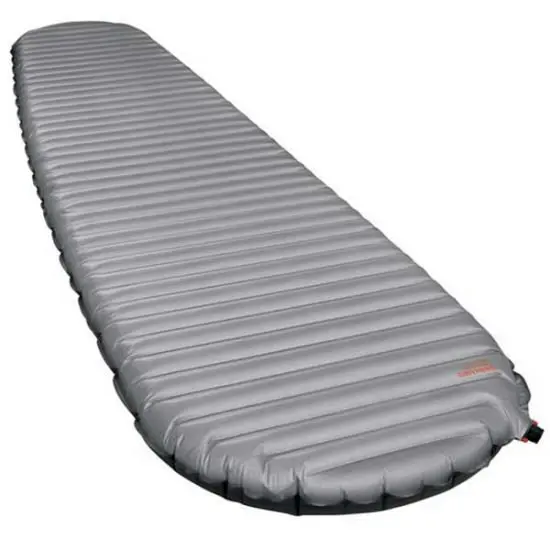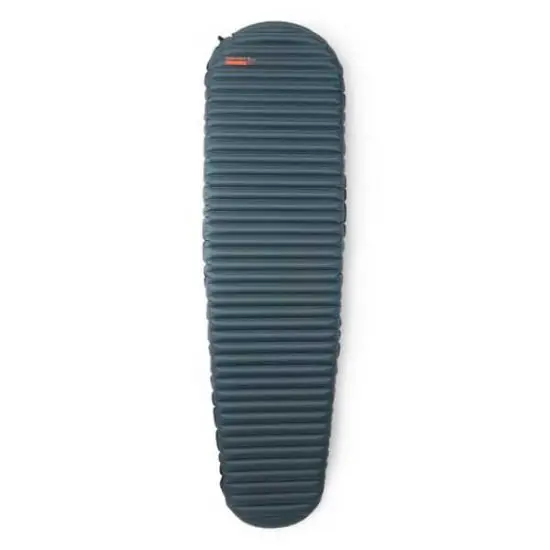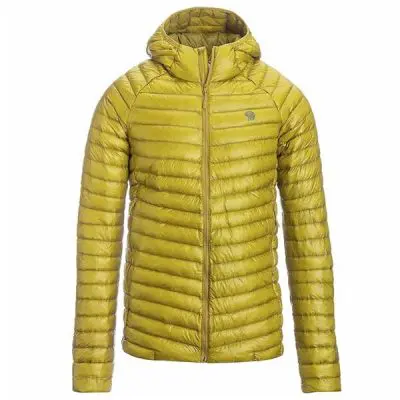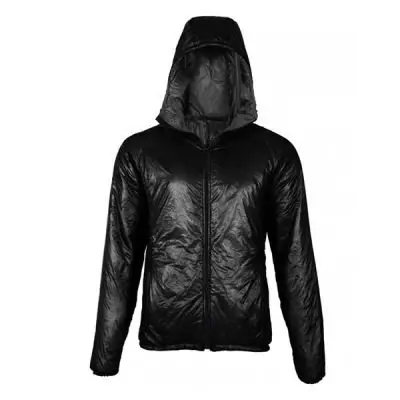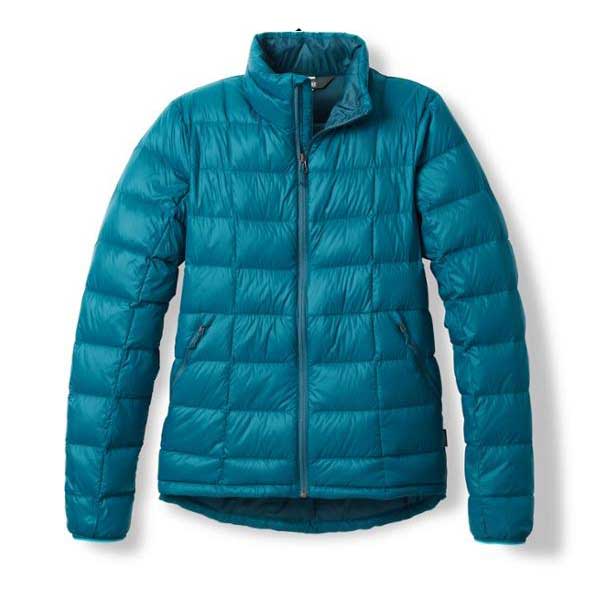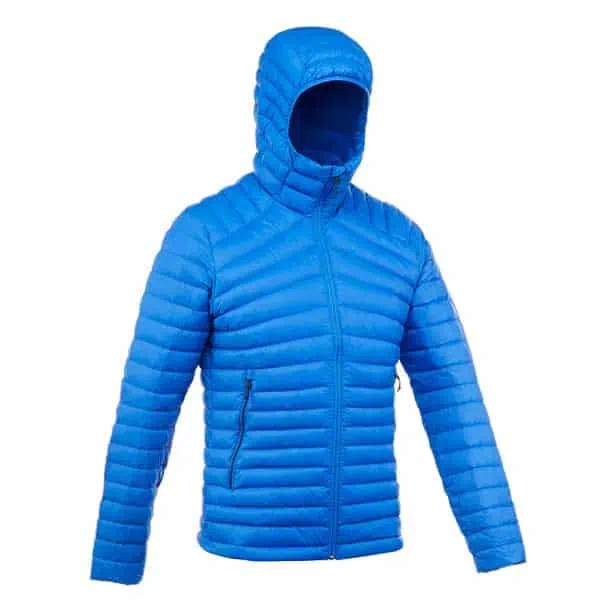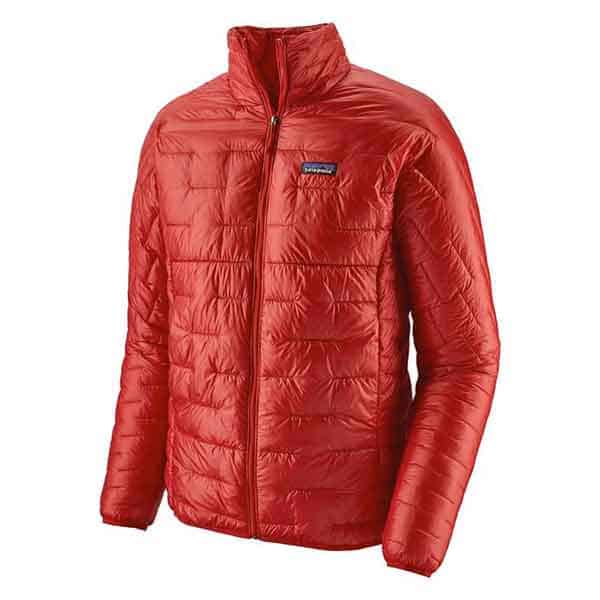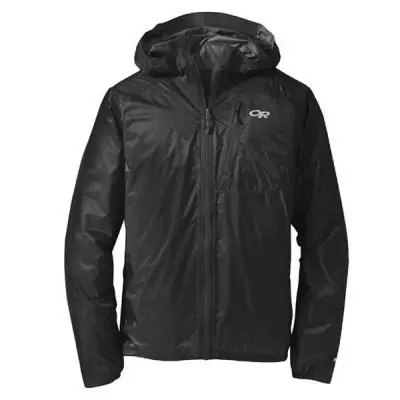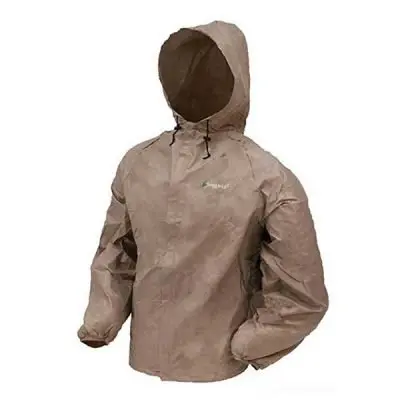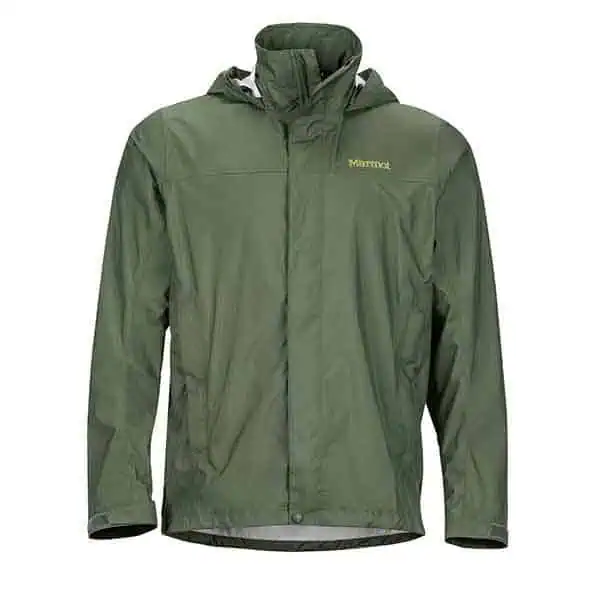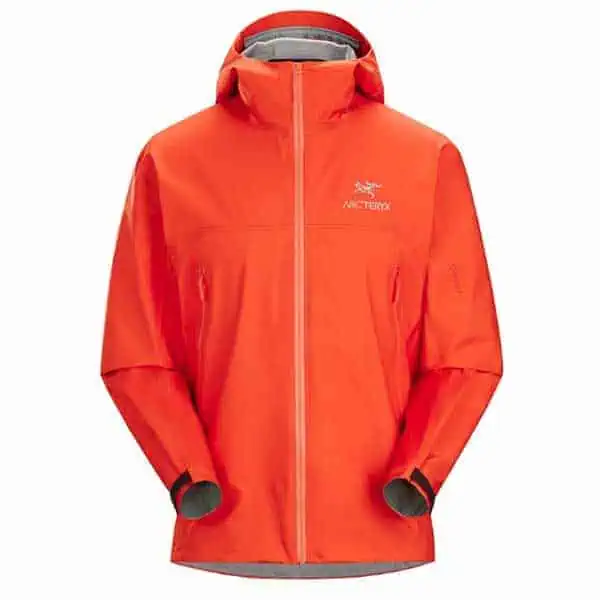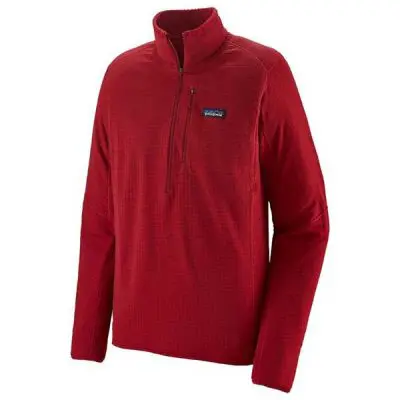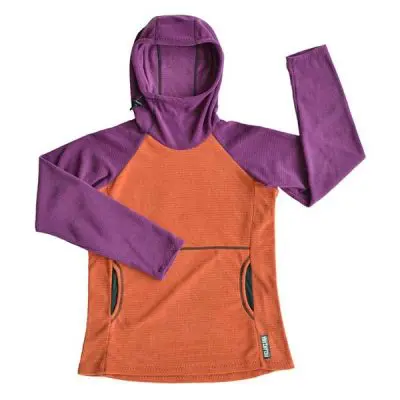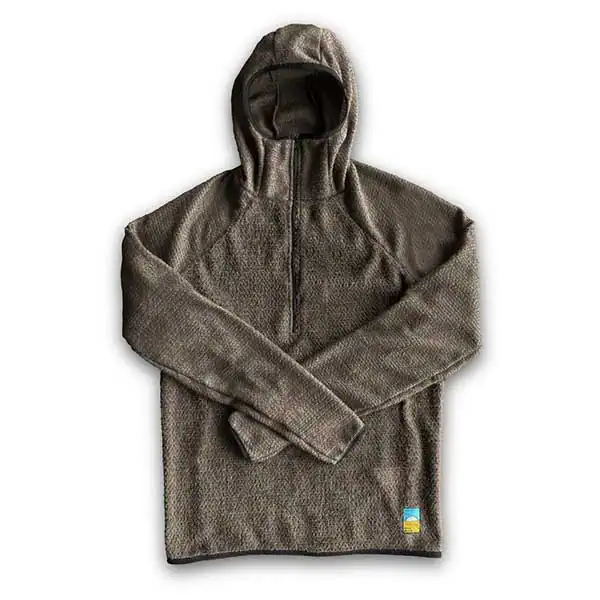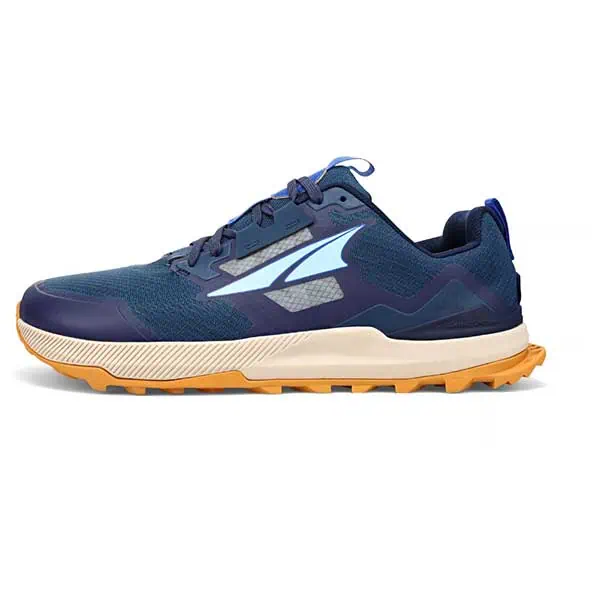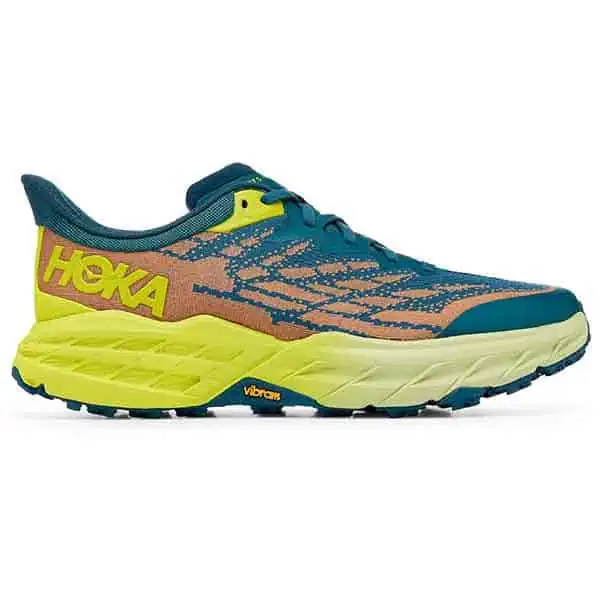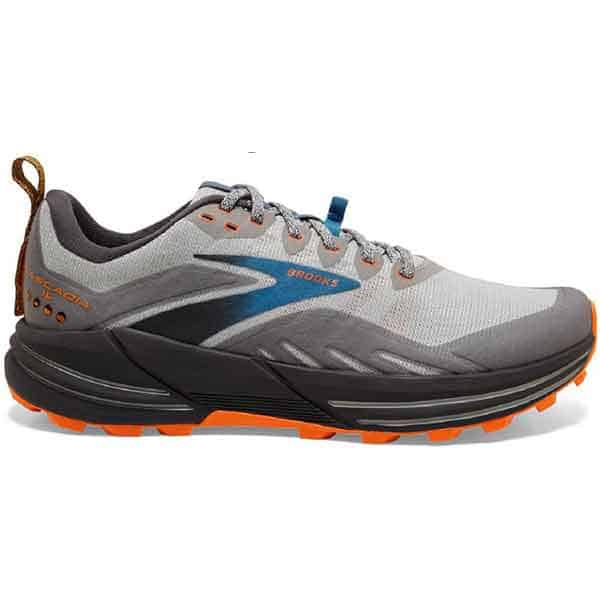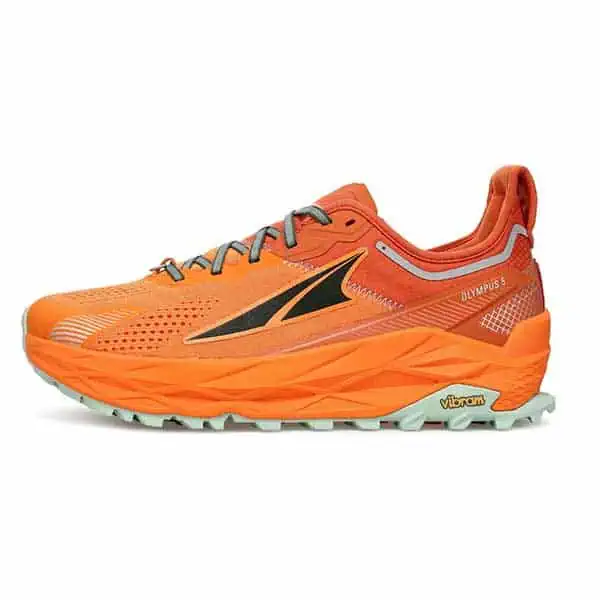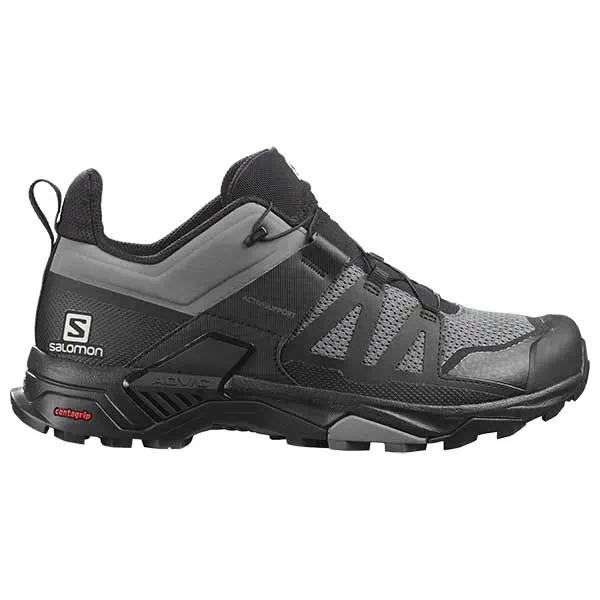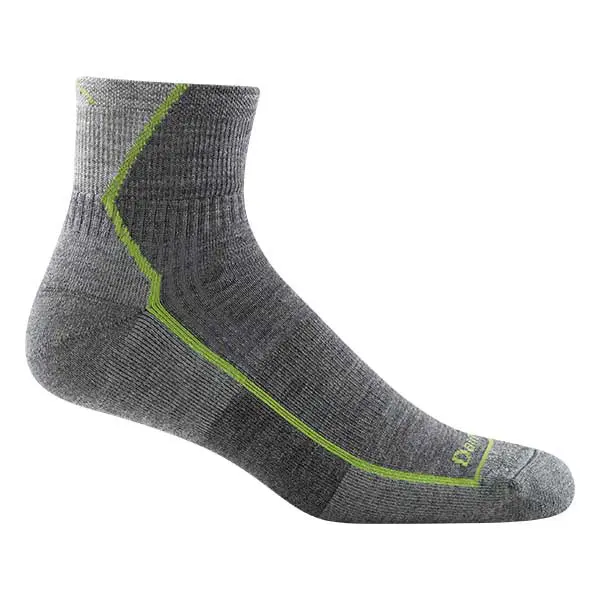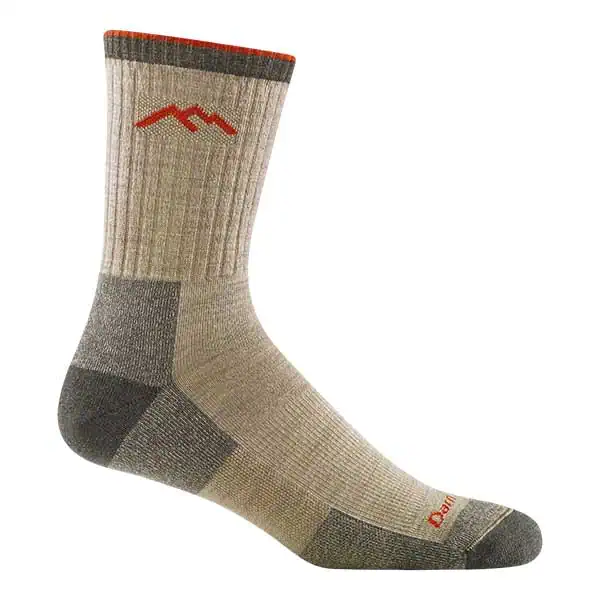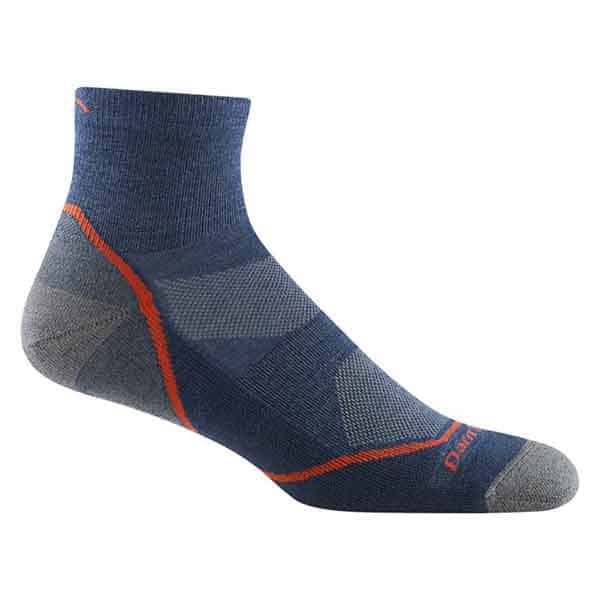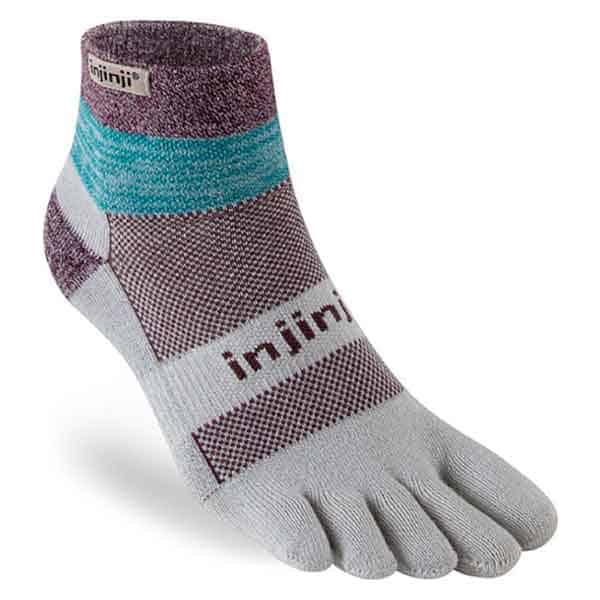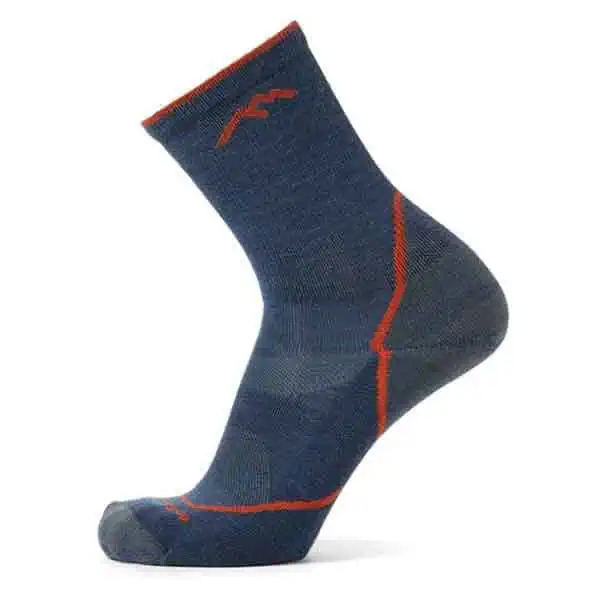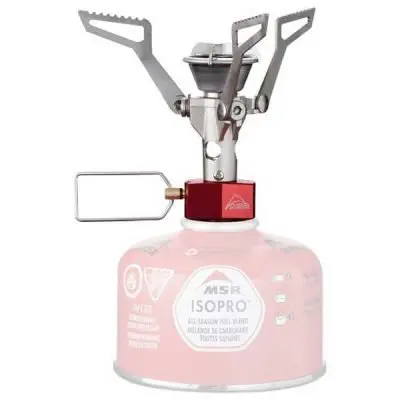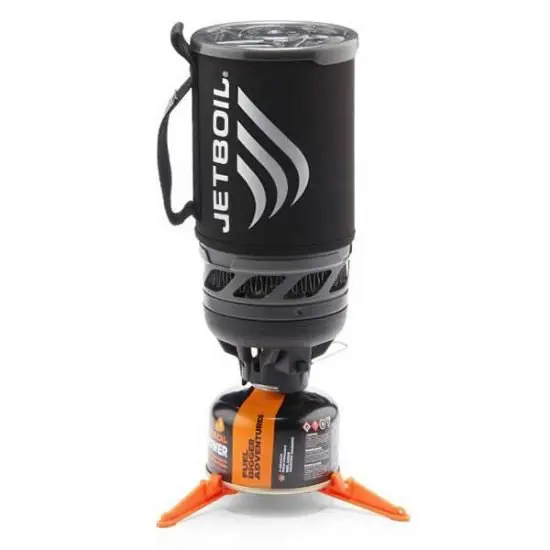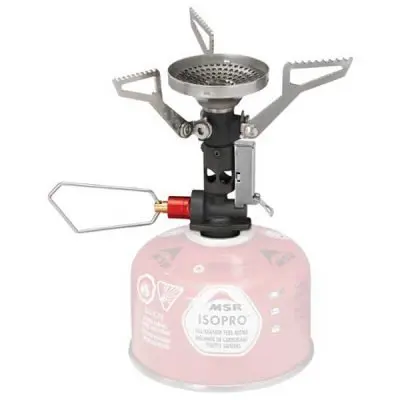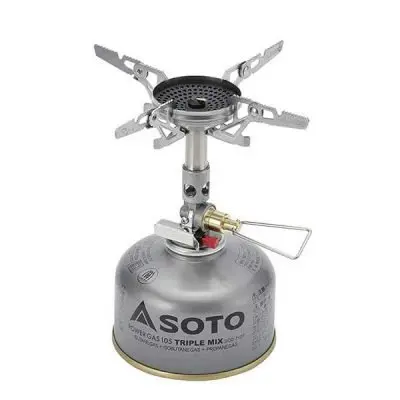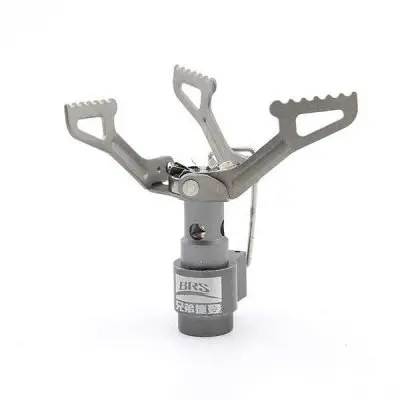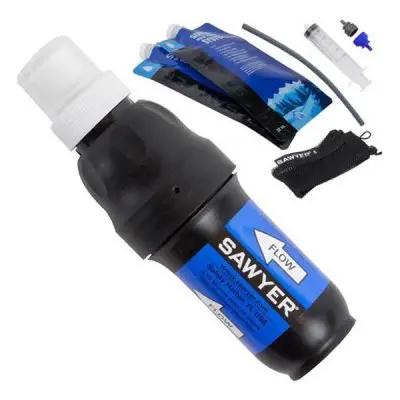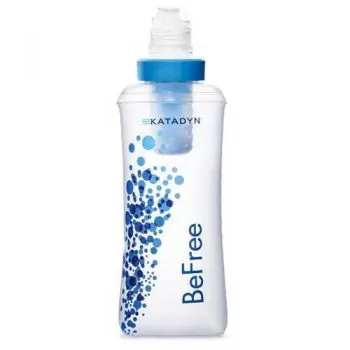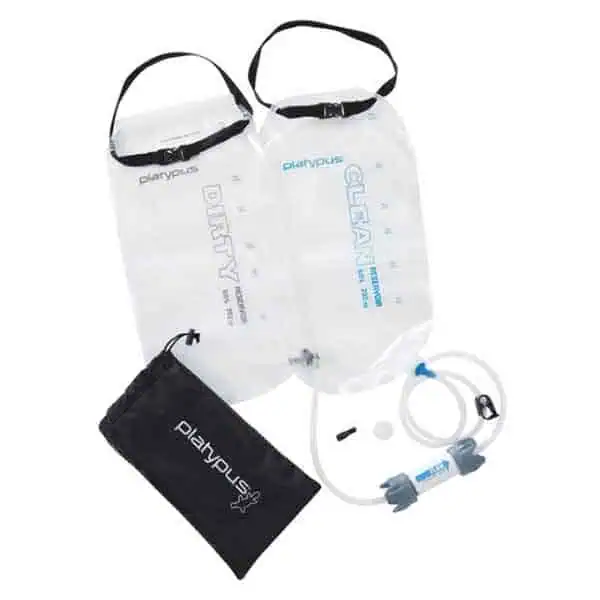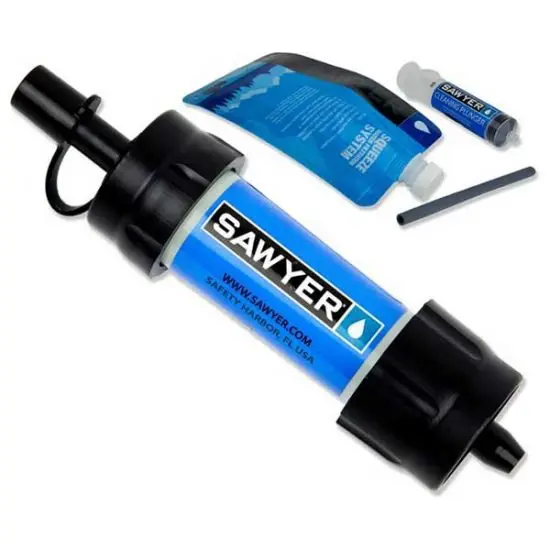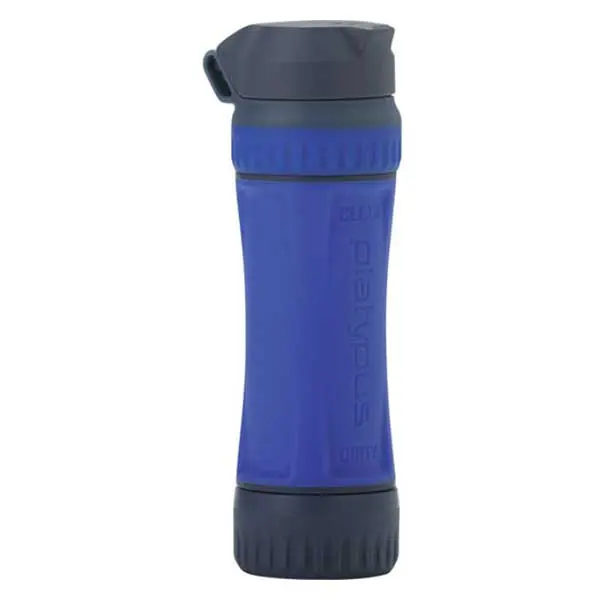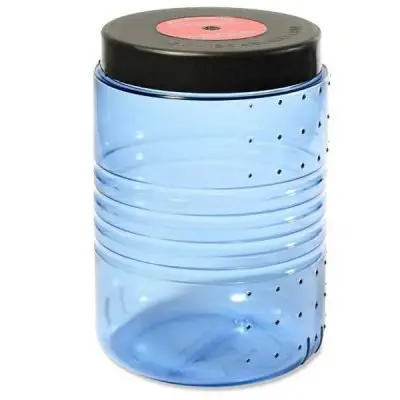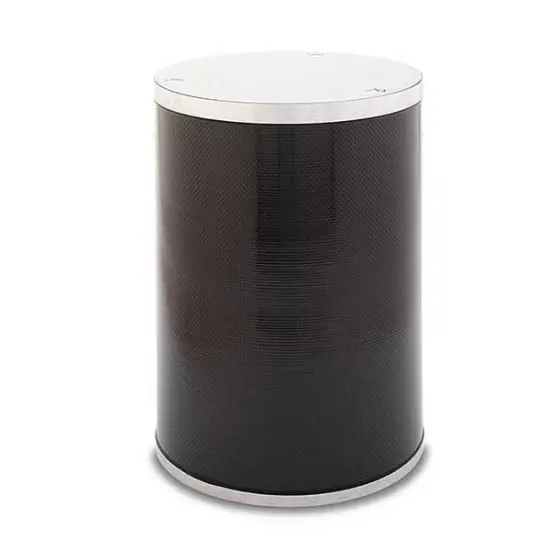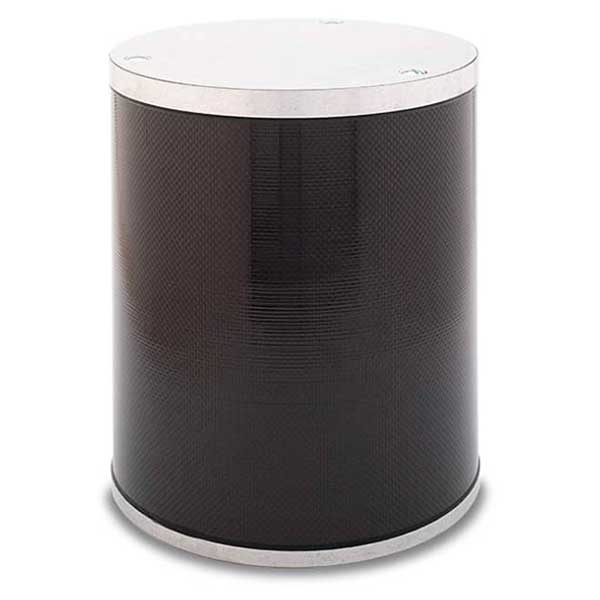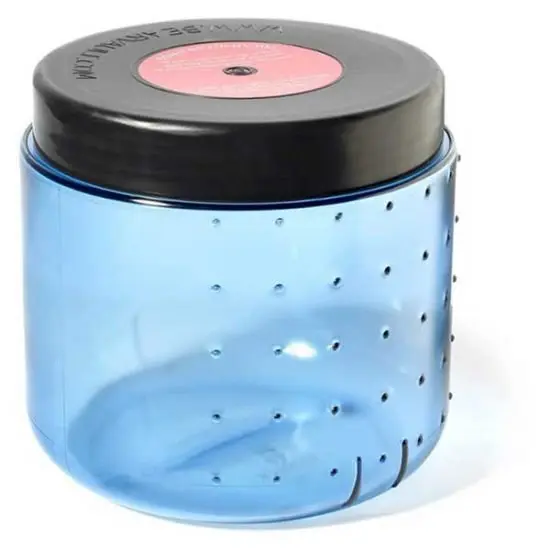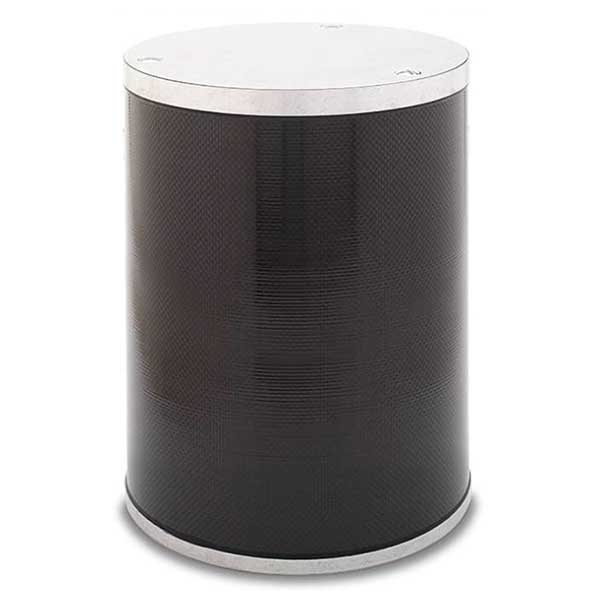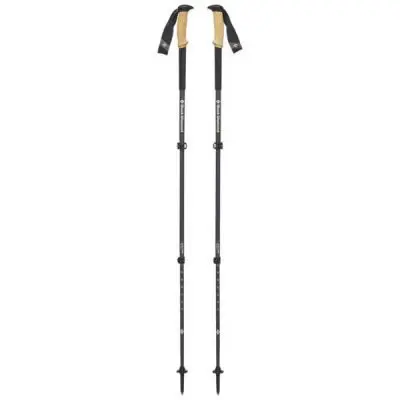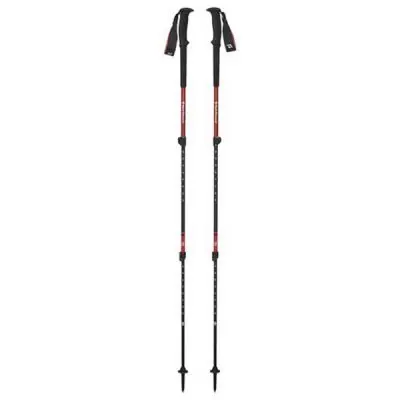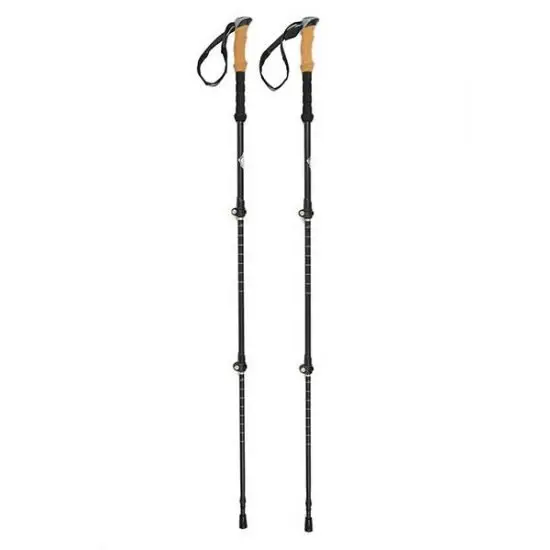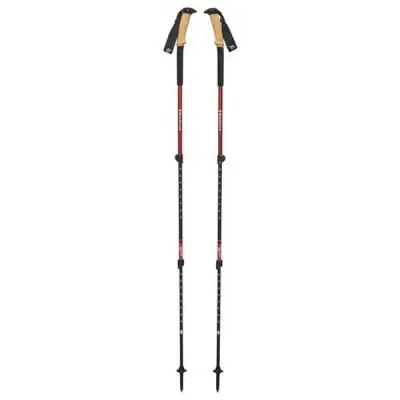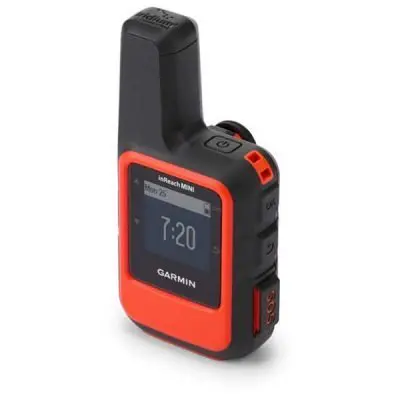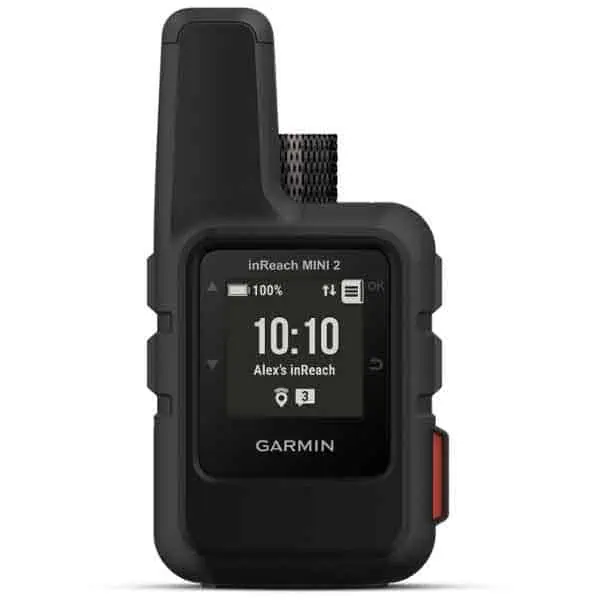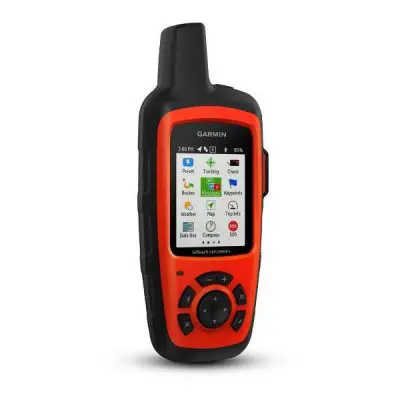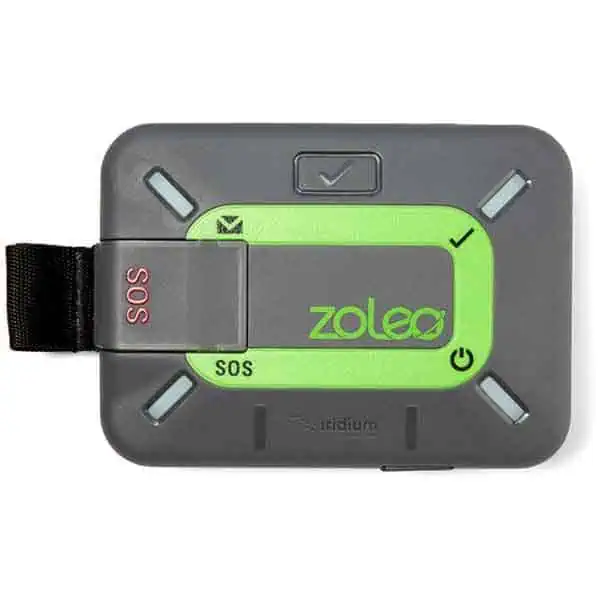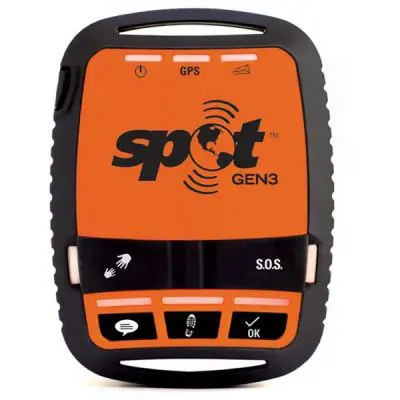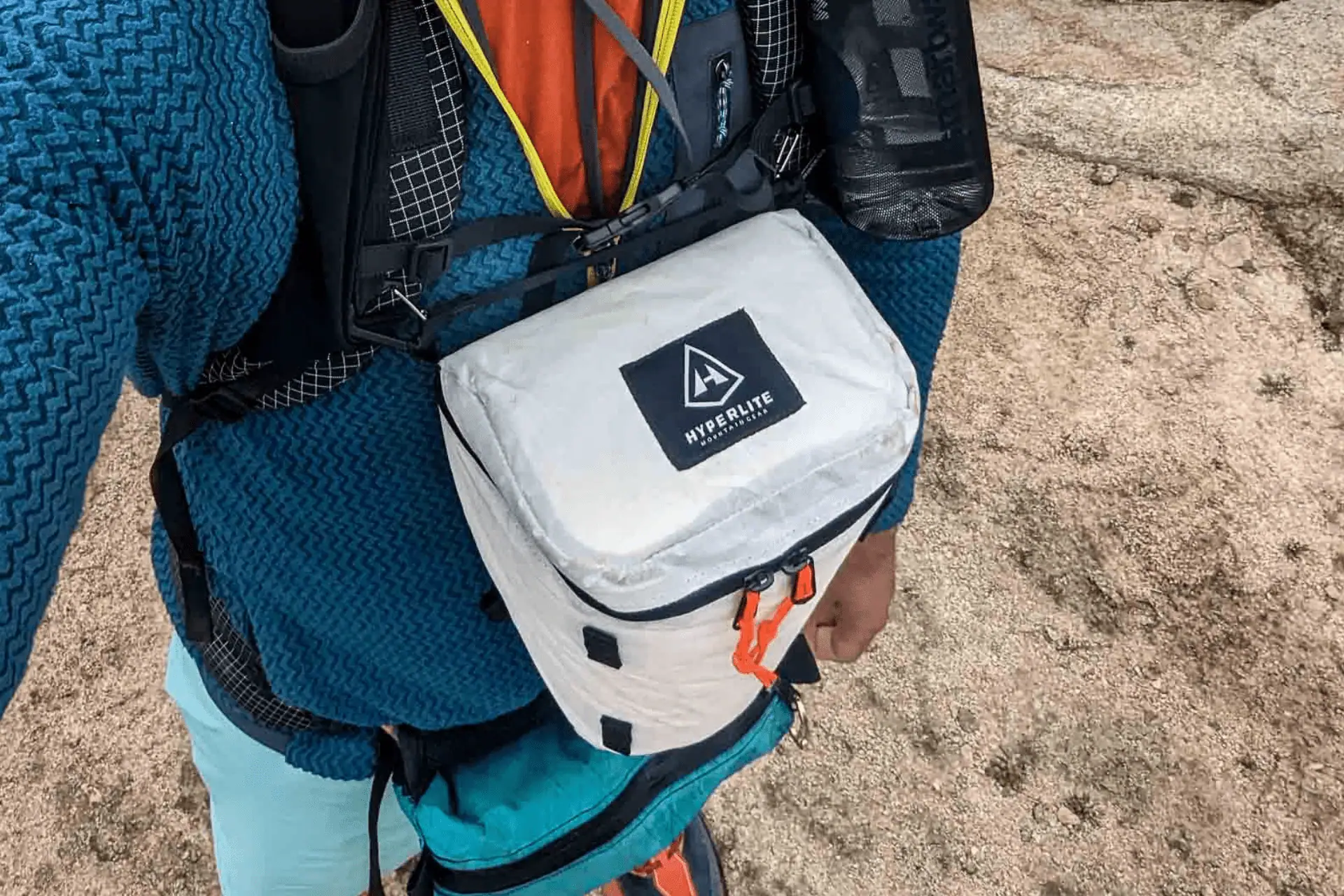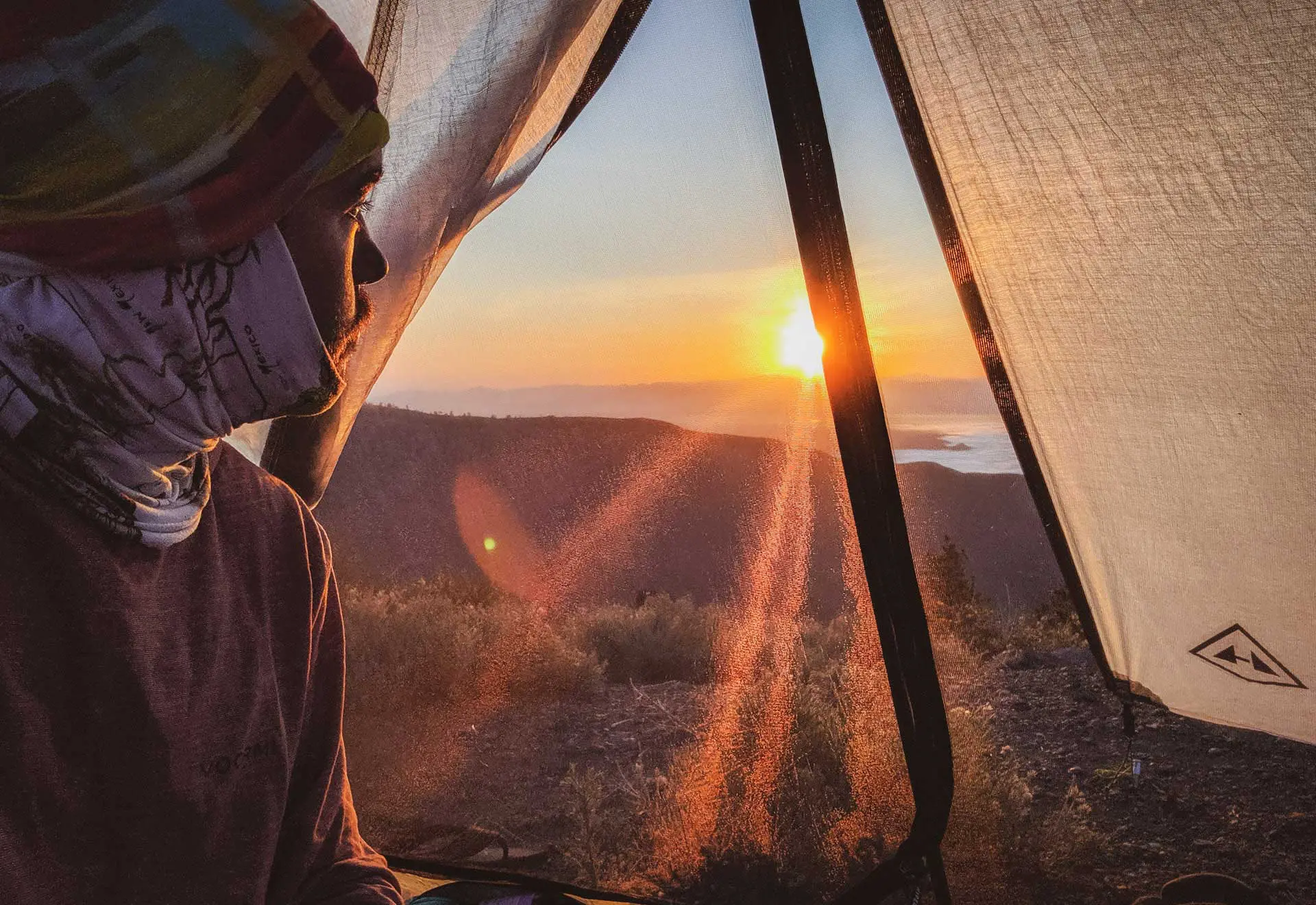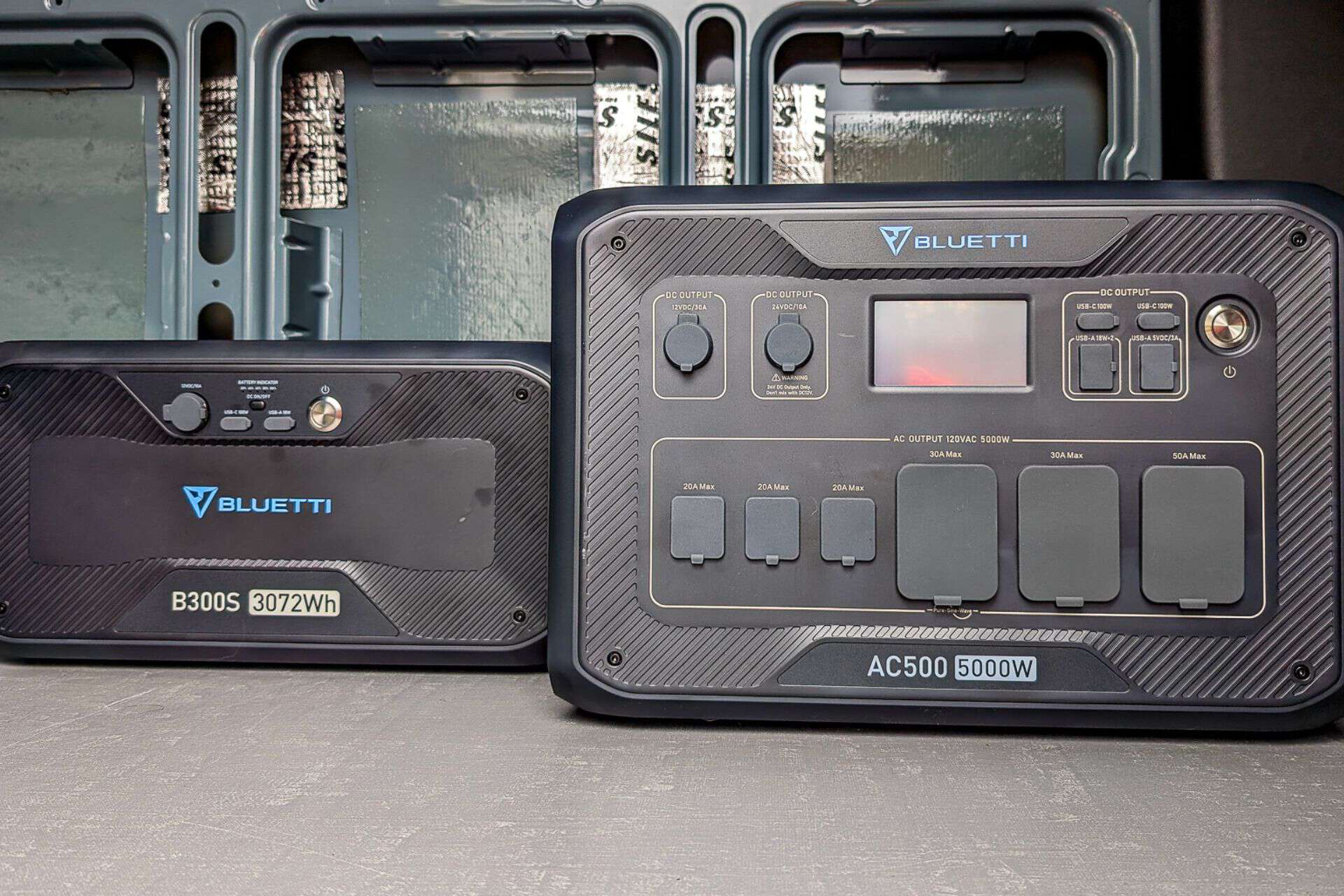John Muir Trail Gear Guide: Class of 2022 Survey
In the second installment of this year’s John Muir Trail Thru-Hiker Survey, we dive into gear for hiking the JMT. John Muir Trail gear lists vary wildly between hikers and (spoiler alert) it’s impossible to find a perfect JMT gear list. That said, we can try.
I’ve organized this in a way that I hope will give a comprehensive picture of what gear JMT thru-hikers are using. This post covers the highest-rated gear, the most common gear, base weights, gear advice, and more.
The gear covered here includes backpacks, shelters, sleeping bags, sleeping pads, insulated jackets, rain jackets, fleeces, shoes, socks, stoves, water treatment, trekking poles, food storage, satellite messengers/PLBs, luxury items, and more.
The goal is for this to be a useful resource for JMT hikers, so if there’s anything that you think is missing, please leave a comment below.
I hope you enjoy this year’s John Muir Trail Gear Guide brought to you by the JMT Class of 2022.

Notes on the Data
- This year, we had 262 completed surveys – a 120% increase over last year. If you’re hiking the John Muir Trail next year, sign up to receive the survey here.
- Some responses have been sorted and colored to present the data in a friendlier manner (e.g. northbound vs. southbound responses).
- I ask that respondents do their best to accurately respond to questions. Not every hiker answers every question and not every answer is guaranteed 100% accurate (e.g. someone may mistakenly report hiking 30 mi / 48 km on their long day hike instead of 28 mi / 45 km).
- I refer to survey respondents collectively as this year’s “class“. Remember, this is a sample and not a comprehensive survey of every hiker who hiked the JMT this year.
- For stats requiring the length of the John Muir Trail for a calculation (e.g. average mileage per day for the trail), I use 220 mi / 354 km.
- The John Muir Trail and thru-hiking in general come with a lot of acronyms and jargon you’re likely unfamiliar with if you’re new to the world of border-to-border foot travel. If you find anything unclear, the thru-hiker glossary may be of use. If you still can’t find what you’re looking for, feel free to drop a comment and let me know.
- The results invoke some math. I suggest you familiarize yourself with the words average, median (M), and standard deviation (σ) if you’re looking to get the most out of your time here.
- Backpacks use capacities closest to 55 liters (if multiple options are available) based on this year’s average of 56.4 liters.
- Sleeping bags and quilts use the highest fill power available and the temperature rating closest to 20°F/-6°C (if multiple options are available).
- All ratings listed are the average (on a scale of 1 to 10) from each hiker who rated the piece of gear.
- More detailed articles focused on JMT Resupply, JMT Demographics, JMT Horror Stories, and JMT Advice are in the works. If you would like to be notified of new surveys, click here.
Data Labels
- Thru-Hikers: all JMT thru-hikers
- Thru-Hikers (0): thru-hikers who did not complete the JMT
- Thru-Hikers (1): thru-hikers who completed the entire JMT
Most Common JMT Gear
I ask each survey respondent about the gear they used during their John Muir Trail hike. With this information, we can easily see what the most popular pieces of gear were on the trail. Here’s what this year’s “Most Common JMT Gear List” backpack had in it – and what that theoretical backpack was.
- Backpack: Gossamer Gear Mariposa (29.8 oz / 846 g | $285)
- Shelter: Zpacks Duplex (1.19 lbs / 539 g | $699)
- Sleeping bag: Enlightened Equipment Revelation (20.9 oz / 593 g | $410)
- Sleeping pad: Therm-a-Rest NeoAir XLite (12.5 oz / 354 g | $200)
- Insulated jacket: Mountain Hardwear Ghost Whisperer/2 Hoody – Men’s/Women’s (8.8 oz. / 249 g | $350)
- Shell: Outdoor Research Helium – Men’s/Women’s (6.3 oz / 179 g | $159)
- Fleece: Patagonia R1 Pullover – Men’s/Women’s (11.7 oz / 332 g | $139)
- Shoes: Altra Lone Peak – Men’s/Women’s (22 oz / 624 g | $150)
- Socks: Darn Tough Hiker Quarter Midweight – Men’s/Women’s (2 oz / 57 g | $20)
- Stove: MSR PocketRocket 2 (2.4 oz / 68 g | $50)
- Water treatment: Sawyer Squeeze (3 oz / 85 g / $39)
- Food storage: BearVault BV500 (41 oz / 1.16 kg | $93)
- Trekking poles: Black Diamond Alpine Carbon Cork (17.1 oz / 485 g / $200)
- Satellite messenger/PLB: Garmin inReach Mini (3.5 oz / 100 g | $350)
Total weight – Big 3 (pack, shelter, sleeping bag): 4.36 lbs / 1.978 kg
Total weight – Big 4 (Big 3 + sleeping pad): 5.14 lbs / 2.332 kg
All gear: 9.15 lbs / 4.151 kg (this does not include trekking poles, shoes, or socks)
In addition to the items noted above, these total base weights (a backpack’s weight minus food, water, and consumables – like poop paper) are missing a few pieces of gear (headlamp, extra clothing, electronics, etc.). It brings us just under halfway to the year’s average starting base weight of 21.72 lbs / 9.852 kg. Note that the stove included in this list, the MSR PocketRocket 2, does not include the weight of a pot.
The total price of all this gear? $3,154 (with one pair of shoes and one pair of socks). The average thru-hikers spent on gear prior to beginning their hikes? $854 (M = $700 | σ = $759)
Highest-Rated Gear List
In addition to asking each John Muir Trail hiker what gear they used, I ask hikers to rate each piece of gear. No point in doing what everyone else is doing if none of them are happy with their choices, right? I’ve also used the results to construct a top-ten list for each of the categories surveyed.
Here’s what this year’s “Highest-Rated JMT Gear List” backpack had in it – and what that theoretical backpack was.
- Backpack: ULA Circuit (2.29 lbs / 1.038 kg | $280)
- Shelter: SlingFin Portal (2.88 lb / 1.31 kg | $540)
- Sleeping bag/quilt: Katabatic Flex (22.8 oz / 646 g | $420)
- Sleeping pad: Sea to Summit Ether XT (17.3 oz / 490 g | $199)
- Insulated jacket: Decathlon Forclaz Trek 100 – Men’s/Women’s (10.2 oz / 289 g | $90)
- Shell: Montbell Versalite – Men’s/Women’s (6.4 oz / 182 g | $249)
- Fleece: Senchi Lark (5 oz / 142 g | $95)
- Shoes: Topo Ultraventure – Men’s/Women’s (20.8 oz / 590 g | $135)
- Socks: Darn Tough Hiker Micro Crew Midweight – Men’s/Women’s ($25)
- Stove: Jetboil MightyMo (3.3 oz / 94 g | $60)
- Water treatment: Platypus GravityWorks (11.5 oz / 326 g | $135)
- Food storage: Bearikade Blazer (33 oz / 936 g | $384)
- Trekking poles: Black Diamond Distance FLZ (14.8 oz / 420 g | $160)
- Satellite messenger/PLB: ZOLEO Satellite Communicator (5.3 oz / 150 g | $200)
Total weight – Big 3 (pack, shelter, sleeping bag): 6.60 lbs / 2.994 kg
Total weight – Big 4 (Big 3 + sleeping pad): 7.68 lbs / 3.484 kg
All gear: 12.35 lbs / 5.603 kg (this does not include trekking poles, shoes, socks, or fitness tracker)
In addition to the items noted above, these total base weights (a backpack’s weight minus food, water, and consumables – like poop paper) are missing a few pieces of gear (headlamp, extra clothing, electronics, etc.). It brings us over halfway to the year’s average starting base weight of 21.72 lbs / 9.852 kg. Note that the stove included in this list, the SOTO Windmaster, does not include the weight of a pot.
The total price of all this gear? $2,972 (with one pair of shoes and one pair of socks). The average thru-hikers spent on gear prior to beginning their hikes? $854 (M = $700 | σ = $759)
Backpacks
One thing everyone definitely (probably?) needs if they’re going on an extended backpacking trip? A backpack.
A backpack can do a lot to define a hiker and you can usually tell a lot (or at least you can sometimes think you can tell a lot) about a hiker by simply taking a look at their pack. In this first section, we’ll look at some backpack stats as well as the most common and highest-rated backpacks among John Muir Trail hikers this year.
Here is the average backpack size used by thru-hikers.
Thru-Hikers
56.4
(M = 58 | σ = 12.1)
Thru-Hikers (1)
56.6
(M = 60 | σ = 12.2)
Thru-Hikers (0)
55.4
(M = 58 | σ = 11.8)
Hikers’ most common complaints when it came to backpacks this year? Packs were uncomfortable with heavy loads and some packs themselves were too heavy.
JMT Hiker Backpacks
The Gossamer Gear Mariposa was the most common backpack on the John Muir Trail this year. It is a 29.8 oz / 846 g pack capable of carrying up to 60 L and 35 lbs / 16 kg of gear.
| # | BACKPACK | RATING | PRICE | WEIGHT | LITERS | MAX LOAD |
|---|---|---|---|---|---|---|
| 1 | Gossamer Gear Mariposa | 8.43 | $285 | 1.79 lb | 814 g | 60 | 35 lb | 16 kg |
| 2 | REI Co-op Flash | 7.67 | N/A | 2.64 lb | 1.191 kg | 55 | 30 lb | 14 kg |
| 3 | ULA Circuit | 9.65 | $280 | 2.29 lb | 1.038 kg | 68 | 35 lb | 16 kg |
| 4 | Hyperlite Mountain Gear Southwest | 8.53 | $379 | 2.00 lb | 896 g | 55 | 40 lb | 18 kg |
| 5 | Osprey Atmos AG | 8.20 | $315 | 4.51 lb | 2.045 kg | 50 | 35 lb | 16 kg |
| 6 | Osprey Exos | 8.67 | $260 | 2.84 lb | 1.288 kg | 58 | 35 lb | 16 kg |
| 7 | Zpacks Arc Haul | 8.33 | $399 | 1.30 lb | 590 g | 50 | 40 lb | 18 kg |
| 8 | ULA Catalyst | 8.70 | $300 | 2.92 lb | 1.324 kg | 75 | 40 lb | 18 kg |
| 9 | Hyperlite Mountain Gear Junction | 9.56 | $379 | 2.00 lb | 896 g | 55 | 40 lb | 18 kg |
| 10 | Osprey Aura AG | 8.56 | $315 | 4.29 lb | 1.946 kg | 50 | 35 lb | 16 kg |
Shelters
Shelters – basically the umbrella term for tents since there are also options such as bivy sacks, tarps, pyramids, and lean-tos – are another essential piece of equipment on the John Muir Trail.
A consideration for hikers when choosing their shelter is whether they would like said shelter to be freestanding. What is a freestanding shelter? It’s a shelter that needs only the tent body and its poles to be set up – no stakes or superfluous tie-outs required. An example of this kind of shelter is the year’s third most common shelter, the Big Agnes Copper Spur HV UL2.
Shelters that are not freestanding require that they be staked or tied out to be set up. These types of shelters typically (but not always) use trekking poles instead of the more traditional tent poles to be set up – something to be considered when looking at shelter weights and prices. An example of this kind of shelter is the year’s most common shelter, the Zpacks Duplex.
Lastly, a semi-freestanding shelter is one that (typically) uses tent poles and can stand on its own, but that requires stakes or tie-outs to be completely set up. An example of this kind of shelter is the year’s fourth most common shelter, the NEMO Equipment Hornet 2.
The following is a breakdown of how many hikers were using a freestanding shelter.
The percentage of hikers using each type of shelter on the John Muir Trail this year.
- 33.7% – Freestanding
- 19.8% – Semi-freestanding
- 46.5% – Not freestanding
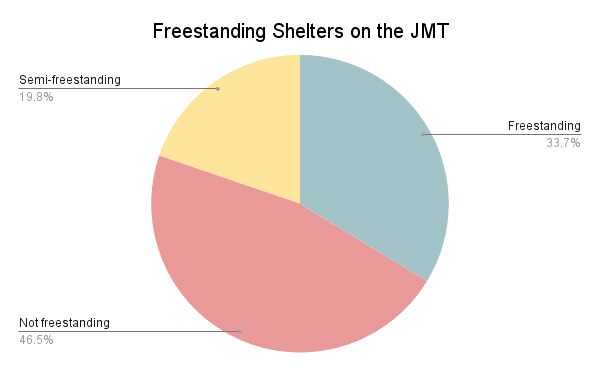
Of the top ten most common shelters, four (the SlingFin Portal, Big Agnes Copper Spur HV UL1 and Big Agnes Copper Spur HV UL2, and the Big Agnes Copper Spur HV UL3) are freestanding. Three others (the Big Agnes Fly Creek HV UL2, Big Agnes Tiger Wall UL2, and NEMO Hornet 2P) are semi-freestanding. This means they can stand on their own without stakes, but they require stakes to be set up fully/properly. The other three are not freestanding.
JMT Hiker Shelters
The Zpacks Duplex was the most common shelter on the JMT this year. It’s a $700, two-person, side-entry, 19 oz / 539 g shelter that requires two trekking poles to set up. It’s made from .51 oz/yd² Dyneema Composite Fabric and required eight stakes to be set up (not included in the $700 price tag).
| # | SHELTER | RATING | PRICE | WEIGHT | FLOOR | FREESTANDING | CAPACITY |
|---|---|---|---|---|---|---|---|
| 1 | Zpacks Duplex | 9.08 | $699 | 1.19 lb | 539 g | 28 ft² / 2.6 m² | No | 2 |
| 2 | NEMO Hornet 2P | 8.86 | $400 | 2.38 lb | 1.08 kg | 27.5 ft² / 2.6 m² | Semi | 2 |
| 3 | Big Agnes Copper Spur HV UL2 | 8.71 | $550 | 2.69 lb | 1.22 kg | 29 ft² / 2.7 m² | Yes | 2 |
| 4 | Big Agnes Tiger Wall UL2 | 7.64 | $450 | 1.88 lb | 853 g | 28 ft² / 2.6 m² | Semi | 2 |
| 5 | Gossamer Gear The One | 8.18 | $300 | 1.11 lb | 503 g | 15.8 ft² / 1.5 m² | No | 1 |
| 6 | Big Agnes Copper Spur HV UL1 | 9.20 | $450 | 2.12 lb | 964 g | 20.6 ft² / 1.86 m² | Yes | 1 |
| 7 | Durston Gear X-Mid 2P | 9.10 | $300 | 2.39 lb | 1.085 kg | 33.2 ft² / 3.1 m² | No | 2 |
| 8 | Big Agnes Fly Creek HV UL2 | 8.50 | $400 | 1.94 lb | 879 g | 28 ft² / 2.6 m² | Semi | 2 |
| 9 | SlingFin Portal | 9.67 | $540 | 2.87 lb | 1.302 kg | 27.45 ft² / 2.55 m² | Yes | 3 |
| 10 | Big Agnes Copper Spur HV UL3 | 8.83 | $600 | 3.5 lb | 1.58 kg | 41 ft² / 3.81 m² | Yes | 3 |
Sleeping Bags & Quilts
Is there a generic term for sleeping bags and quilts? Sleeping sacks? Insulation-filled backpacking tortillas? Writing sleeping bags/quilts is a bit excessive/unnecessary feeling (and just annoying). Suggestions welcome.
Quilts have become exceedingly popular in recent years and they have become the unofficial standard in thru-hiker kits; four of the top five most common insulation-filled backpacking tortillas (trying it out) were quilts. That said, many quilts come in a variety of temperature ratings and with a large number of customizable options.
Individual hiker temperature needs can vary greatly. How warm of a sleeper are you? Which sleeping pad do you have? Do you sleep in your clothes? With another person? In a small tent? A big tent? With a dog? Bigfoot?
The typical range for JMT sleeping bags and quilts is between 10°F and 20°F (-12.2°C to -6.7°C). Which bag will be best for you will depend. Here’s what this year’s class had.
Thru-Hikers
19.1°F
Average sleeping bag rating (-7.7°C)
(M = 20°F / -6.7°C)
Thru-Hikers
41.2%
Percentage of hikers using a quilt instead of a traditional sleeping bag
Thru-Hikers
24.3°F
-4.3°C
The average bag/quilt temperature of hikers who said they were too cold at night
JMT Hiker Sleeping Bags
The Enlightened Equipment Revelation was the most common sleeping bag (quilt) on the JMT this year. The Revelation is highly customizable and comes in a variety of lengths, widths, temperature ratings, fill powers, and colors. What’s the difference between the Revelation and the third-most-common Enlightened Equipment Enigma? The Enigma has a sewn footbox (i.e. the Revelation can be laid completely flat).
| # | RATING | BAG/QUILT | PRICE | WEIGHT | TEMP | FILL | FILL WEIGHT |
|---|---|---|---|---|---|---|---|
| 1 | 9.23 | Enlightened Equipment Revelation | $410 | 20.9 oz | 593 g | 20°F / -6°C | 950 duck | 14.4 oz / 408 g |
| 2 | 8.72 | REI Co-op Magma | $429 | 2.22 lb | 1006 g | 15°F / -9°C | 850 goose | 23.3 oz / 660 g |
| 3 | 8.90 | Enlightened Equipment Enigma | $410 | 19.3 oz | 547 g | 20°F / -6°C | 950 duck | 13.8 oz / 392 g |
| 4 | 9.56 | Hammock Gear Economy Burrow | $225 | 23.95 oz | 679 g | 20°F / -6°C | 850 goose | 14.45 oz / 410 g |
| 5 | 9.43 | Feathered Friends Egret UL | $549 | 27.2 oz | 771 g | 20°F / -6°C | 950 goose | 17.3 oz / 491 g |
| 6 | 9.00 | Zpacks Classic Sleeping Bag | $449 | 18.8 oz | 533 g | 20°F / -6°C | 900 goose | 14.5 oz / 411 g |
| 7 | 9.00 | Feathered Friends Flicker UL | $489 | 25.2 oz | 715 g | 20°F / -6°C | 950 goose | 14.7 oz / 417 g |
| 8 | 7.20 | REI Co-op Igneo | N/A | 29 oz | 822 g | 19°F / -7°C | 700 duck | N/A |
| 9 | 9.80 | Katabatic Flex | $420 | 22.8 oz | 646 g | 22°F / -5.6°C | 900 goose | 14.3 oz / 405g |
| 10 | 9.40 | UGQ Bandit | $345 | 19.2 oz | 544 g | 20°F / -6°C | 950 goose | 13 oz / 369 g |
Sleeping Pads
Sleeping pads are another must-have item on the John Muir Trail. Hikers essentially have two options: an inflatable sleeping pad or a foam sleeping pad.
There are pros and cons to both. Foam pads can’t pop, can be easily deployed, aren’t noisy when rolled around on, and make acceptable LARPing weapons; inflatable pads pack down small, have higher R-values (i.e. they’re warmer), can (sometimes) be lighter, and make acceptable rafts.
Which sleeping pad is best for you depends on your personal needs and, in some cases, how much durability you’re willing to sacrifice to save weight. The overwhelming majority of JMT hikers used inflatable sleeping pads with nearly a third of all hikers using some version of the Therm-a-Rest NeoAir XLite (either the regular, small, or women’s version).
The percentage of hikers using each style of sleeping pad on the John Muir Trail this year.
- 93.9% – Inflatable
- 6.1% – Foam
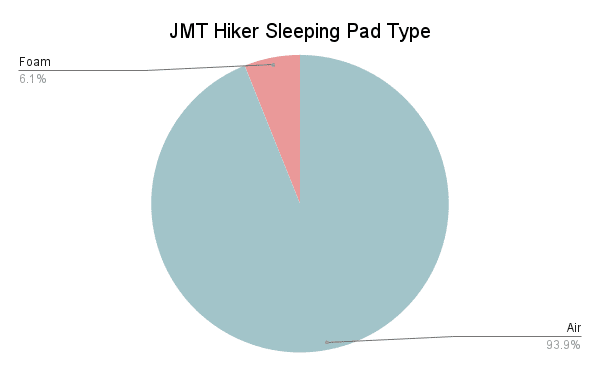
JMT Hiker Sleeping Pads
The Therm-a-Rest NeoAir XLite was the most common sleeping pad among John Muir Trail hikers this year. This air pad has an R-value of 4.2, weighs 12.5 oz / 354 g, packs down to 4.1 x 9 in / 10 x 23 cm, and is 2.5 in / 6.4 cm thick. The women’s version was the third-most-common pad on the trail this year.
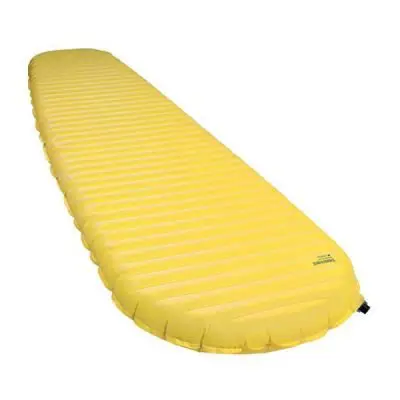
| # | PAD | RATING | PRICE | WEIGHT | R-VALUE | THICKNESS |
|---|---|---|---|---|---|---|
| 1 | Therm-a-Rest NeoAir XLite | 8.45 | $200 | 12.5 oz | 354 g | 4.2 | 2.5 in / 6.4 cm |
| 2 | NEMO Tensor (Insulated) | 8.33 | $190 | 14.5 oz | 411 g | 4.2 | 3 in / 7.6 cm |
| 3 | Therm-a-Rest NeoAir XTherm | 9.43 | $230 | 17 oz | 482 g | 6.9 | 2.5 in / 6.4 cm |
| 4 | Therm-a-Rest NeoAir XLite - Women's | 8.50 | $200 | 12.5 oz | 354 g | 5.4 | 2.5 in / 6.4 cm |
| 5 | Therm-a-Rest NeoAir UberLite | 5.90 | $220 | 8.8 oz | 250 g | 2.3 | 2.5 in / 6.4 cm |
| 6 | Klymit Static V2 | 7.89 | $75 | 16 oz / 454 g | 1.3 | 2.5 in / 6 cm |
| 7 | Sea to Summit UltraLight Insulated | 8.88 | $150 | 16.9 oz | 480g | 3.1 | 2 in / 5 cm |
| 8 | NEMO Switchback | 8.43 | $55 | 14.5 oz | 415 g | 2 | 0.9 in / 2.3 cm |
| 9 | Sea to Summit Ether XT | 9.83 | $199 | 17.3 oz | 490 g | 3.2 | 4 in / 10 cm |
| 10 | Big Agnes Air Q-Core SLX | 9.60 | $150 | 22.2 oz | 629 g | 4.5 | 4.5 in / 11 cm |
Insulated Jackets
Something to keep the top half of your body warm – whether this is a base layer, a fleece, or an insulated jacket – is something else every John Muir Trail hiker should have with them. Of this year’s class, 83.3% of hikers had an insulated jacket – meaning 16.7% of hikers said they didn’t bring one.
Besides the question of whether to bring an insulated jacket (insulated jacket because “down jacket” isn’t accurate since not all jackets use down insulation and because the word “puffy” isn’t quite official – also I want to spell the plural “puffys” because “puffies” looks weird and I’m never quite sure which to use), hikers need to decide whether they want their jacket to have a hood.
Many of the most popular insulated jackets have both hooded and non-hooded versions available. Typically the hoodless versions are called “jackets” while the hooded versions are called hoodies (e.g. Patagonia Micro Puff Jacket vs. Patagonia Micro Puff Hoody).
The percentage of hikers using hooded and not hooded (unhooded?) jackets on the John Muir Trail this year.
- 72.1% – Hooded
- 27.9% – Not hooded
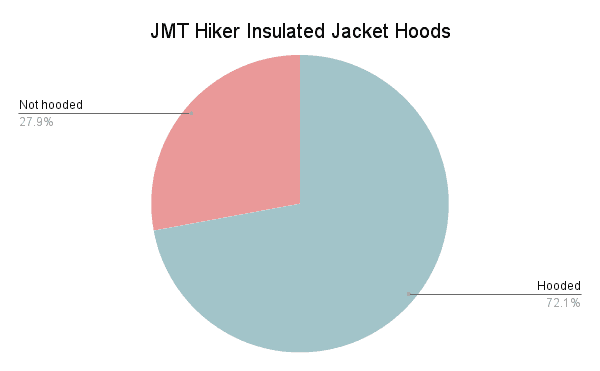
JMT Hiker Insulated Jackets
The Mountain Hardwear Ghost Whisperer/2 Hoody (Men’s/Women’s) was the most common jacket among John Muir Trail hikers this year. The 8.8 oz / 249 g jacket uses 800-fill RDS-certified down insulation and a 10D nylon shell. There is a version without a hood available as well – the ninth-most-common jacket on the trail this year.
| # | JACKET | RATING | PRICE | WEIGHT | HOOD | POCKETS |
|---|---|---|---|---|---|---|
| 1 | Mountain Hardwear Ghost Whisperer/2 Hoody (M/W) | 9.33 | $325 | 8.8 oz | 249 g | Yes | 2 hand |
| 2 | Enlightened Equipment Torrid (M/W) | 9.71 | $185 | 8.4 oz | 238 g | Yes | 2 hand |
| 3 | REI Co-op 650 (M/W) | 8.76 | $100 | 11 oz / 312 g | No | 2 hand | 2 drop |
| 4 | Decathlon Forclaz Trek 100 (M/W) | 9.73 | $90 | 10 oz | 284 g | Yes | 2 hand |
| 5 | Patagonia Nano Puff Jacket (M/W) | 9.23 | $229 | 11.9 oz | 337 g | No | 2 hand | 1 internal chest |
| 6 | Patagonia Micro Puff Jacket (M/W) | 9.00 | $279 | 10.5 oz | 298 g | No | 2 hand | 2 drop |
| 7 | Arc'teryx Cerium Hoody (M/W) | 8.90 | $400 | 10.2 oz | 290 g | Yes | 2 hand |
| 8 | Patagonia Micro Puff Hoody (M/W) | 9.22 | $299 | 10.7 oz | 303 g | Yes | 2 hand | 2 drop |
| 9 | Mountain Hardwear Ghost Whisperer 2 (M/W) | 9.71 | $300 | 8.3 oz | 235 g | No | 2 hand |
| 10 | Patagonia Down Sweater (M/W) | 9.57 | $279 | 13 oz | 369 g | No | 2 hand | 1 internal chest | 2 drop |
Shells
Shells – or rain jackets – (hopefully) aren’t something John Muir Trail hikers will be using every day, but they are also not something that should be overlooked. Weather on the JMT can be unpredictable and getting caught out on the trail unprepared in a storm could quickly turn into a life-threatening situation.
JMT Hiker Shells
The Outdoor Research Helium was the most common rainwear on the John Muir Trail this year. It’s one of the lightest options available at just 6.3 oz/ 179 g, but it’s also one of the lowest rated. There’s a single chest pocket (no hand pockets), an elastic drawcord hem, and elastic cuffs. It has a 30D nylon shell and a 2.5L waterproof laminate.
| # | SHELL | RATING | PRICE | WEIGHT | FABRIC | PIT ZIPS |
|---|---|---|---|---|---|---|
| 1 | Outdoor Research Helium (M/W) | 8.53 | $159 | 6.3 oz | 179 g | 2.5-layer Pertex Shield (Nylon) | No |
| 2 | Frogg Toggs Ultra-Lite 2 | 7.90 | $25 | 5.5 oz | 156 g | Three-layer polypropylene | No |
| 3 | Montbell Versalite (M/W) | 9.60 | $249 | 6.4 oz | 182 g | 2-layer GORE-TEX Infinium Windstopper | Yes |
| 4 | Marmot PreCip (M/W) | 7.20 | $100 | 10.3 oz | 293 g | NanoPro 100% Nylon | Yes |
| 5 | Mountain Hardwear Stretch Ozonic (M/W) | 8.88 | $200 | 10.5 oz | 304 g | Dry.Q 50D Stretch Ripstop 2.5L | Yes |
| 6 | Arc’teryx Beta (M/W) | 8.00 | $400 | 10.6 oz | 300 g | GORE-TEX w/ GORE C-KNIT backer | Yes |
| 7 | Enlightened Equipment Visp (M/W) | 8.00 | $210 | 5.95 oz | 169 g | 7D nylon + PU membrane + tricot lining | Yes |
| 8 | The North Face Venture 2 (M/W) | 8.43 | $99 | 11.6 oz | 329 g | 2.5-layer DryVent Ripstop Nylon | Yes |
| 9 | Columbia OutDry Featherweight (M/W) | 8.60 | N/A | 7.5 oz | 213 g | OutDry Extreme | No |
| 10 | Patagonia Torrentshell (M/W) | 7.80 | $179 | 14.1 oz | 400 g | 3L 3.5-oz 50D ECONYL Recycled Nylon | Yes |
Fleeces
Many hikers opt to carry a fleece either in addition to or instead of an insulated jacket. They’re typically more comfortable to hike in (if you’re using your extra layers for more than just staying warm at camp) and can offer a bit more versatility than a puffy depending on the situation.
It wasn’t uncommon for hikers to carry a fleece or even a fleece in addition to an insulated jacket; 37.3% of hikers brought a fleece.
The following breakdown shows the percentage of JMT hikers who brought only a fleece, brought only an insulated jacket, and those who brought both.
- 62.1% – Insulated jacket only
- 32.0% – Insulated jacket and fleece
- 3.2% – Fleece only
- 2.8% – Neither an insulated jacket nor a fleece (this is not recommended)

JMT Hiker Fleeces
The most common fleece on the John Muir Trail was the Patagonia R1 Pullover (Men’s/Women’s). It’s an 11.7 oz / 332 g quarter-zip hoodless with a single zippered exterior chest pocket.
| # | FLEECE | RATING | PRICE | WEIGHT | FABRIC | ZIP |
|---|---|---|---|---|---|---|
| 1 | Patagonia R1 Pullover (M/W) | 9.13 | $139 | 11.7 oz | 332 g | 93% Recycled Polyester, 7% Spandex | Quarter |
| 2 | Melanzana Microgrid Hoodie | 9.56 | $78 | 12.1 oz | 343 g (L) | Polyester | None |
| 3 | Senchi Designs Lark | 10.00 | $95 | 5 oz | 142 g | Polartec Alpha Direct 90 | Quarter |
| 4 | Appalachian Gear Company Fleece Hoodie (M/W) | 9.67 | $158 | 11 oz | 312 g | Alpaca Fiber | None |
| 5 | KUIU Peloton 97 | 9.00 | $99 | 5 oz | 142 g | TORAY Karuishi Fleece | Quarter |
Shoes
Shoes are perhaps one of the most important gear choices for John Muir Trail hikers as they’re what’s literally moving you up the trail. They’re also one of the most individual-specific pieces of gear.
The shoes that work, which may be the objectively best choice for one person, could easily be the objectively worst choice for another person. Some shoes may be more popular while others may be of higher quality materials, but ultimately the “best shoes” are the ones that work best for the individual.
You shouldn’t be afraid of trying on multiple models from multiple brands to find the most comfortable shoe for your foot. That said, the most common shoes, the Altra Lone Peak (Men’s/Women’s), were used by over a quarter (27.6%) of JMT hikers.
The overwhelming majority (over 96%) of hikers used low-top trail runners; 4% used mid or high-top shoes. Similarly, only 4% of hikers used waterproof shoes.
For more on hiking shoes, check out the Best Shoes for Thru-Hiking.
JMT Hiker Shoes
The Altra Lone Peak (Men’s/Women’s) was the most common shoe on the feet of John Muir Trail hikers this year. They cost $150 per pair, have a 0 mm heel-toe drop, and weigh 22 oz / 624 g per pair. Altra typically releases a new version of the Lone Peak every year; at the time of publication, the latest version is the Lone Peak 7.
| # | SHOES | RATING | PRICE | WEIGHT | HEEL-TOE DROP | ROCK PLATE |
|---|---|---|---|---|---|---|
| 1 | Altra Lone Peak (M/W) | 8.63 | $150 | 22 oz | 624 g | 0 mm | No |
| 2 | HOKA ONE ONE Speedgoat (M/W) | 8.78 | $155 | 20.6 oz | 584 g | 4 mm | No |
| 3 | Brooks Cascadia (M/W) | 9.14 | $130 | 19.1 oz | 542 g | 8 mm | Yes |
| 4 | Salomon X Ultra (M/W) | 9.22 | $120 | 25.4 oz | 360 g | 11 mm | No |
| 5 | Altra Olympus (M/W) | 8.78 | $180 | 24.6 oz | 697 g | 0 mm | No |
| 6 | La Sportiva Bushido (M/W) | 8.17 | $145 | 21 oz | 595 g | 6 mm | Yes |
| 7 | Merrell Moab - Mid (M/W) | 7.83 | $120 | 34 oz | 964 g | N/A | Yes |
| 8 | Topo Ultraventure (M/W) | 9.40 | $150 | 21 oz | 595 g | 5 mm | No |
Socks
After shoes, the socks of a John Muir Trail hiker probably take the most (if not more) damage from the daily grind of the trail. The standout sock brand among hikers – occupying four of the top five most common spots – is Darn Tough.
Hikers love these socks not only for their comfort and durability but because they’re “Unconditionally Guaranteed for Life”. Basically, wear a hole in your sock(s) while hiking and you can get a new pair (reasonable exceptions apply such as fire damage or animal tearing apart). Over 54% of JMT hikers had Darn Tough socks on the trail.
For more on hiking socks, check out the Best Socks for Thru-Hiking.
JMT Hiker Socks
Darn Tough dominated John Muir Trail hikers’ feet this year with the Darn Tough Hiker Quarter Midweight (Men’s/Women’s) being the most commonly used model. They are made of 60% merino wool, 38% nylon, and 2% spandex, they have a medium cushion, cost $20 a pair, and have an unconditional lifetime guarantee. The second most common sock was the crew length of this same sock.
| # | SOCKS | RATING | PRICE | FABRIC | CUSHION | HEIGHT |
|---|---|---|---|---|---|---|
| 1 | Darn Tough Hiker Quarter Midweight (M/W) | 9.40 | $20 | 60% merino wool, 38% nylon, 2% spandex | Medium | Ankle |
| 2 | Darn Tough Hiker Micro Crew Midweight (M/W) | 9.20 | $25 | 61% merino wool, 36% nylon, 3% spandex | Medium | Crew |
| 3 | Darn Tough Light Hiker Quarter (M/W) | 8.91 | $20 | 52% nylon, 44% merino wool, 4% spandex | Light | Ankle |
| 4 | Injinji Trail Midweight Mini-Crew (M/W) | 9.22 | $16 | 58% nylon, 39% CoolMax polyester, 3% spandex | Medium | Mini-Crew |
| 5 | Darn Tough Light Hiker Micro Crew (M/W) | 8.90 | $23 | 54% nylon, 43% merino wool, 3% spandex | Light | Crew |
| 6 | Injinji Liner Crew | 9.10 | $12 | 75% CoolMax polyester, 21% nylon, 4% spandex | Light | Crew |
| 7 | Smartwool Hike Light Cushion Crew (M/W) | 8.95 | $24 | 56% merino wool, 11% nylon, 31% recycled nylon, 2% elastane | Light | Crew |
Stoves
Hikers have a wide variety of stoves and fuel sources to choose from when selecting their backpacking stoves. Fuel sources include denatured alcohol/HEET, solid fuel, liquid fuel, isobutane/propane (aka gas canisters), and even old-fashioned wood.
The overwhelming majority (98.8%) of hikers carried stoves that use isobutane/propane gas canisters.
That said, there were still a number of hikers who were stoveless (that is, they did not carry a stove with them on the trail) and others who changed their minds as the trail went on. Here’s a breakdown of what that looked like.
- 95.3% – Carried stove for the entirety of hike
- 3.9% – Stoveless
- 0.8% – Began with stove and then went stoveless
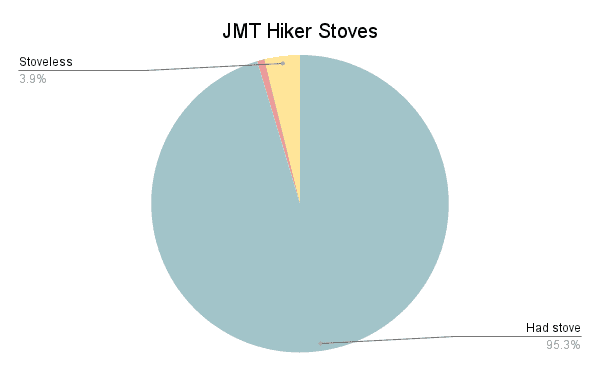
JMT Hiker Stoves
The MSR PocketRocket 2 was the most common stove on the John Muir Trail this year. It’s a 2.6 oz / 74 g canister stove that requires a lighter to ignite (i.e. no push-button ignition). The push-button start version, the MSR PocketRocket Deluxe, was the third-most-common stove. The reported boil time for one liter of water is 3.5 minutes.
| # | STOVE | RATING | PRICE | WEIGHT | INTEGRATED POT | FUEL |
|---|---|---|---|---|---|---|
| 1 | MSR PocketRocket 2 | 9.27 | $50 | 2.6 oz | 73 g | No | Isobutane canister |
| 2 | JetBoil Flash | 8.81 | $115 | 13.1 oz | 371 g | Yes | Isobutane canister |
| 3 | SOTO Windmaster | 9.60 | $65 | 2.3 oz | 65 g | No | Isobutane canister |
| 4 | MSR PocketRocket Deluxe | 9.16 | $80 | 2.9 oz | 83 g | No | Isobutane canister |
| 5 | BRS 3000T | 8.71 | $30 | 0.9 oz | 25 g | No | Isobutane canister |
| 6 | JetBoil MiniMo | 9.78 | $155 | 14.6 oz | 414 g | Yes | Isobutane canister |
| 7 | JetBoil MightyMo | 10.00 | $60 | 3.3 oz | 94 g | No | Isobutane canister |
| 8 | JetBoil Stash | 9.43 | $145 | 7.1 oz | 201 g | Yes | Isobutane canister |
| 9 | SOTO Amicus | 8.50 | $45 | 2.9 oz | 81 g | No | Isobutane canister |
| 10 | MSR Windburner | 9.40 | $170 | 15.3 oz | 434 g | Yes | Isobutane canister |
Water Treatment
Despite what a small vocal minority of hikers may tell you, water treatment is essential on the John Muir Trail. Pooping your pants on the trail (or in town) because you have contracted giardia is not a fun time. On that note, be sure to sanitize your hands frequently and to keep your hands out of bags of food – especially other people’s – pour that delicious snack into your hand instead.
Hikers have many options available when it comes to water filtration – hollow fiber membrane squeeze filters, pump filters, UV filters, and chemical treatments (e.g. bleach or iodine) to name a few.
The hollow membrane squeeze filter is by far the most popular choice among JMT hikers with a reported 79.8% of hikers using a hollow membrane squeeze filter. Four of the top five most common water treatments fall into this category. These filters are typically inexpensive, lightweight, and easy to use, but they can also clog quickly and are susceptible to freezing (and breaking), so it’s important to properly care for them on the trail.
The most common hollow membrane squeeze filter (and the most common water treatment overall), the Sawyer Squeeze, was used by 46.3% of hikers (the Sawyer Micro and MINI were used by an additional 1.9 and 5.4% of hikers respectively).
JMT Hiker Water Treatment
The Sawyer Squeeze was (by far) the most common John Muir Trail water filter this year. It’s a $39, 3 oz / 85 g hollow fiber filter that rids your drinking water of protozoa and bacteria (and floaties). It can be used with Sawyer bags (included with the filter) or with compatible water bottles (Smartwater is the bottle of choice for many hikers). The Sawyer comes in two smaller sizes as well, the Sawyer Micro and the Sawyer MINI.
| # | TREATMENT | RATING | PRICE | WEIGHT | MEDIUM | REMOVES |
|---|---|---|---|---|---|---|
| 1 | Sawyer Squeeze | 8.67 | $39 | 3 oz | 85 g | Hollow fiber | Protozoa / bacteria |
| 2 | Katadyn BeFree | 8.53 | $45 | 2.3 oz | 65 g | Hollow fiber | Protozoa / bacteria |
| 3 | Platypus GravityWorks | 8.80 | $126 | 10.9 oz | 309 g | Hollow fiber | Protozoa / bacteria |
| 4 | Sawyer MINI | 7.64 | $23 | 2 oz | 57 g | Hollow fiber | Protozoa / bacteria |
| 5 | Platypus QuickDraw | 8.80 | $45 | 2.2 oz | 63 g | Hollow fiber | Protozoa / bacteria |
| 6 | Katadyn BeFree Gravity | 8.00 | $75 | 6.8 oz | 19. g | Hollow fiber | Protozoa / bacteria |
| 7 | Katadyn Hiker Pro Microfilter | 9.57 | $90 | 11 oz | 312 g | Hollow fiber | Protozoa / bacteria |
| 8 | Aquamira | 7.83 | $15 | 3 oz | 85 g | Chlorine dioxide | Protozoa / bacteria / viruses |
| 9 | Sawyer Micro | 7.20 | $33 | 2.5 oz | 71 g | Hollow fiber | Protozoa / bacteria |
Food Storage
John Muir Trail hikers are required to carry bear canisters for the entirety of the JMT.
Although there are bear boxes at some campsites along the JMT, these can fill up quickly and should not be counted on. Also, please note that there is no need to put your bear canister in a bear box if it’s properly closed. This does nothing but take up space in the bear box.
Most Common JMT Food Storage
The BearVault BV500 was the most common bear canister on the John Muir Trail this year. It has an 11.5 L capacity and is made from polycarbonate (transparent blue plastic). The lid can be removed without any tools (or coins), and the canister measures 12.7 x 8.7 in / 32 x 22 cm.
| # | CANISTER | RATING | PRICE | WEIGHT | CAPACITY | MATERIAL |
|---|---|---|---|---|---|---|
| 1 | BearVault BV500 | 8.23 | $93 | 41 oz | 1.162 kg | 11.5 L | Polycarbonate |
| 2 | Bearikade Expedition | 9.36 | $424 | 36 oz | 1.021 kg | 14.7 L | Carbon fiber |
| 3 | Bearikade Weekender | 9.60 | $359 | 31 oz | 879 g | 10.6 L | Carbon fiber |
| 4 | BearVault BV450 | 8.65 | $81 | 33 oz | 935 g | 7.2 L | Polycarbonate |
| 5 | Bearikade Blazer | 9.82 | $384 | 33 oz | 936 g | 12.3 L | Carbon fiber |
Trekking Poles
Not all hikers carry trekking poles and not all hikers who carry them do so for the entirety of the trail (careful not to leave your trekking poles behind – especially in a hitch). That said, with over 95% of JMT hikers using trekking poles, they’re certainly worth considering if you’ve never tried them out. Here are the most common and highest-rated from this year’s JMT class.
JMT Hiker Trekking Poles
The Black Diamond Alpine Carbon Cork was the most common trekking pole on the John Muir Trail this year. They weigh 17.1 oz / 485 g (per pair), have a carbon fiber shaft, cork grips, external lever lock, and collapse down to 24 in / 61 cm.
Satellite Messengers/PLBs
I am a huge proponent of carrying a satellite messenger or PLB in the backcountry. Honestly, recreating – at least thru-hiking – without one is borderline irresponsible (at best). Fortunately, these devices are becoming more popular; over 86% of JMT hikers carried a satellite messenger or PLB on the trail.
What’s the difference between a PLB and a satellite messenger? Essentially, a PLB is a device without a subscription and with a singular function – to send an SOS in an emergency. PLBs generally use a different satellite network than satellite messengers and are (at least widely thought to be) more reliable. However, this is not to say that satellite messengers are unreliable.
A satellite messenger (generally) offers two-way communication and additional features such as real-time tracking or maps. Satellite messengers usually require a subscription to remain active.
For more on satellite messengers and PLBs, check out the Best Satellite Messengers for Thru-Hiking.
JMT Hiker Satellite Messengers/PLBs
The Garmin inReach Mini was the most common personal locator beacon on the John Muir Trail this year. The new model, the inReach Mini 2, was the second most common (and the highest rated). The mini is an awesome piece of equipment that can be used for two-way messaging, navigation, tracking, and as an SOS device. It weighs 3.5 oz / 99 g and requires a monthly (or annual) subscription to function at full capacity.
| # | DEVICE | RATING | PRICE | WEIGHT | MESSAGING | MAPS |
|---|---|---|---|---|---|---|
| 1 | Garmin inReach Mini | 8.88 | $350 | 3.5 oz / 99 g | Two-way | No |
| 2 | Garmin inReach Mini 2 | 8.44 | $350 | 3.5 oz / 99 g | Two-way | No |
| 3 | Garmin inReach Explorer+ | 8.47 | $450 | 7.5 oz / 213 g | Two-way | Yes |
| 4 | ZOLEO Satellite Communicator | 9.18 | $200 | 5.3 oz / 150 g | Two-way | No |
| 5 | Spot Gen3 | 7.17 | N/A | 4 oz / 113 g | One-way (presets) | No |
Highest-Rated vs Most Common Gear
How do the highest-rated and most common John Muir Trail gear lists stack up?
| JMT GEAR | HIGHEST-RATED | MOST COMMON |
|---|---|---|
| Total cost* | $2,972 | $3,153 |
| Total weight – Big 3 | 6.60 lbs / 2.994 kg | 4.36 lbs / 1.978 kg |
| Total weight – Big 4 | 7.68 lbs / 3.484 kg | 5.14 lbs / 2.332 kg |
| All JMT gear** | 12.35 lbs / 5.603 kg | 9.15 lbs / 4.151 kg |
Note: The most common shelter is not freestanding and requires stakes and trekking poles (i.e., additional weight) to be set up. Additionally, the most common and highest-rated stoves do not include the weight of a pot.
*This does not include the price of a fitness tracker
**This does not include poles, shoes, or socks
| GEAR | HIGHEST-RATED | MOST-COMMON |
|---|---|---|
| Backpack | ULA Circuit | Gossamer Gear Mariposa |
| Shelter | SlingFin Portal | Zpacks Duplex |
| Sleeping Bag | Katabatic Flex | Enlightened Equipment Revelation |
| Sleeping Pad | Sea to Summit Ether XT | Therm-a-Rest NeoAir XLite |
| Insulated Jacket | Decathlon Forclaz Trek 100 (Men’s/Women’s) | Mountain Hardwear Ghost Whisperer/2 Hoody (Men’s/Women’s) |
| Shell | Montbell Versalite (Men’s/Women’s) | Outdoor Research Helium (Men’s/Women’s) |
| Fleece | Senchi Lark | Patagonia R1 Pullover (Men’s/Women’s) |
| Shoes | Topo Ultraventure (Men’s/Women’s) | Altra Lone Peak (Men’s/Women’s) |
| Socks | Darn Tough Hiker Micro Crew Midweight (Men’s/Women’s) | Darn Tough Hiker Quarter Midweight (Men’s/Women’s) |
| Stove | Jetboil MightyMo | MSR PocketRocket 2 |
| Water Treatment | Platypus GravityWorks | Sawyer Squeeze |
| Food Storage | Bearikade Blazer | BearVault BV500 |
| Trekking Poles | Black Diamond Distance FLZ | Black Diamond Alpine Carbon Cork |
| PLB | ZOLEO Satellite Communicator | Garmin inReach Mini |
Additional Gear Carried
The items broken down above in detail are not the only items in JMT hiker backpacks. There’s a lot of gear that while not completely necessary (shoes, for example), is still carried by many JMT hikers. If you think any of these should be added to the detailed breakdown please let me know (headlamps are one I’m considering including in the future).
- 92.9% – Battery pack
- 88.9% – First-Aid Kit
- 88.9% – Trowel
- 78.2% – Bottom Baselayer
- 77.8% – Gloves
- 71.8% – Top Baselayer
- 52.0% – Neck Gaiter (aka Buff)
- 46.4% – Gaiters (Shoes)
- 39.3% – Rain Pants
- 37.7% – Whistle
- 37.3% – Compass
- 17.5% – Wind Jacket
- 12.3% – Signal mirror
- 11.9% – Wind Pants
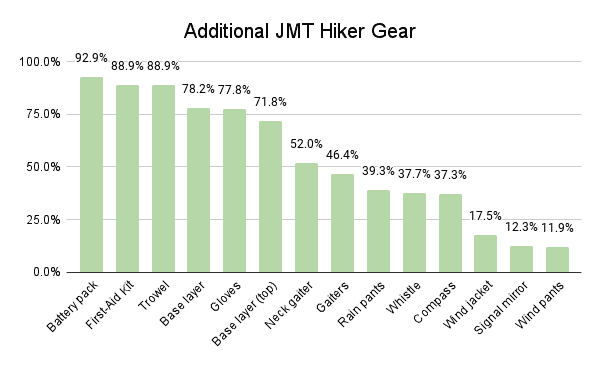
Luxury Items
John Muir Trail hikers obsess over their gear lists and what goes into their packs, but most everyone has something that could be considered a luxury item by someone else. Some people believe their phone to be an essential and multifunctional piece of gear while others may scoff at the idea of using one to take photos, listen to music, and use GPS in the wilderness.
In the thru-hiking community, the term “luxury item” can mean a lot of different things depending on who you’re talking to. Essentially, it’s anything not necessary for your trip. However, what’s considered to be necessary can change a lot depending on who you’re talking to.
Here are the most popular “luxury items” on the trail this year.
Battery Packs
It should be noted that a lot of hikers yelled at me about including battery packs in the “luxury item” category, so I have officially moved them to be a standard piece of backpacking equipment. Feel free to yell at me in the comments and let me know if battery packs should have their own detailed item breakdown in future surveys.
Thru-Hikers
14,021 mAh
Average battery pack size
(M = 10,000 | σ = 7,572)
- 65.1% – Pillow
- 63.5% – Camp shoes
- 52.0% – Towel
- 26.6% – Journal
- 19.8% – Deodorant
- 17.1% – Sleeping bag liner
- 15.1% – Massage ball
- 14.7% – Kindle
- 10.7% – Book
- 8.7% – Cards
- 7.9% – Fishing pole
- 3.6% – Chair
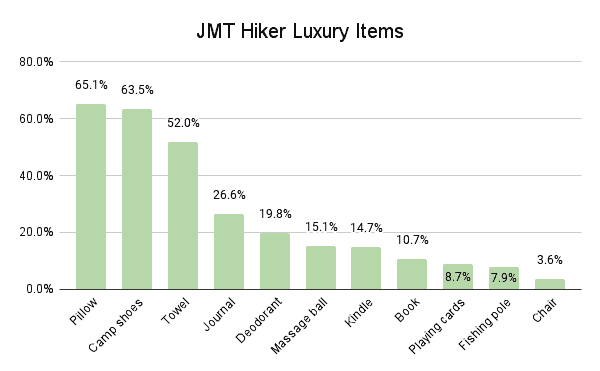
Gear Advice
To wrap up this portion of the gear breakdown (posts on couples’ gear and gear broken down by gender are on the way), I have advice from this year’s JMT Class on gear choices and gear lists for future JMT hikers.
- Highly recommend a sleeping bag liner; you can tailor it if you’re a hot or cold sleeper and wash it when you’re in town much easier than your full sleeping bag.
- I’m going to get a rain skirt and probably a GORE-TEX rain jacket. When it comes down, it’s good to have. I got caught in the monsoon floods on August 1 and it ended my trip.
- My 10,000 mAh battery was not enough for me even with resupplying everywhere and primarily using it to charge my phone.
- sunglasses are a key piece of gear that I carry and no one ever asks about.
- I picked up a pair of Injinji Sock Liners right before the trip and they are now a must-have item for me.
Support the Survey
Every year, I receive numerous requests for guidance on how to support the surveys. Beyond sharing them with your close-knit bubble of weird hiker friends, the best way to support the survey is to contribute via Patreon. You’ll get access to exclusive posts, discount codes, live streams, and super awesome stickers so that everyone will know how cool you are.
If you’re not into Patreon, that’s cool; you can Venmo @halfwayanywhere, Cash app $halfwayanywhere, or PayPal moc.erehwynayawflah@tcatnoc
This is not expected. The data collected in the survey will always be free and accessible to everyone who wants/needs it. Your support is much appreciated and helps pay the website (and survey) bills.


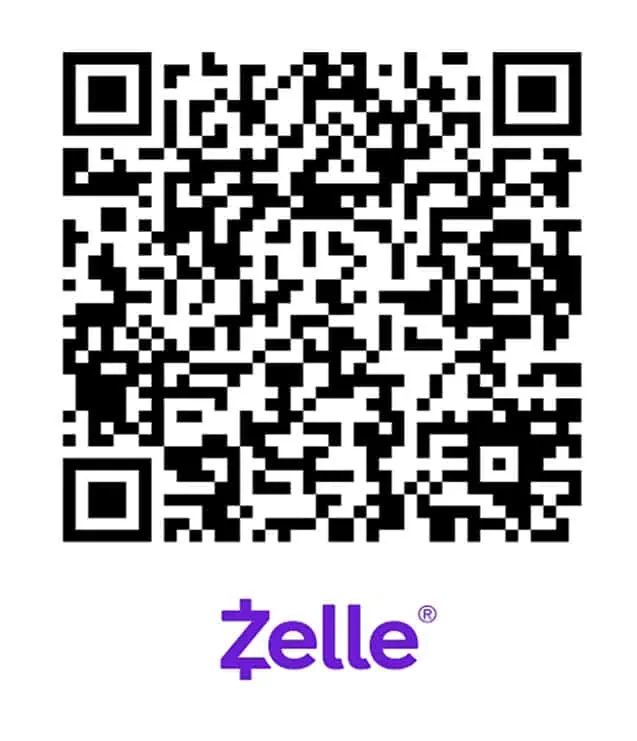
If you have any suggestions that would make this information more useful (or any additional gear-related cross-referencing you would like to see), please leave a comment below and let me know.
Affiliate Disclosure: This page may contain affiliate links, which means I may receive small commissions for purchases made via these links at no additional cost to you. This helps pay the bills and keep the site up and running. Thank you for your support!
